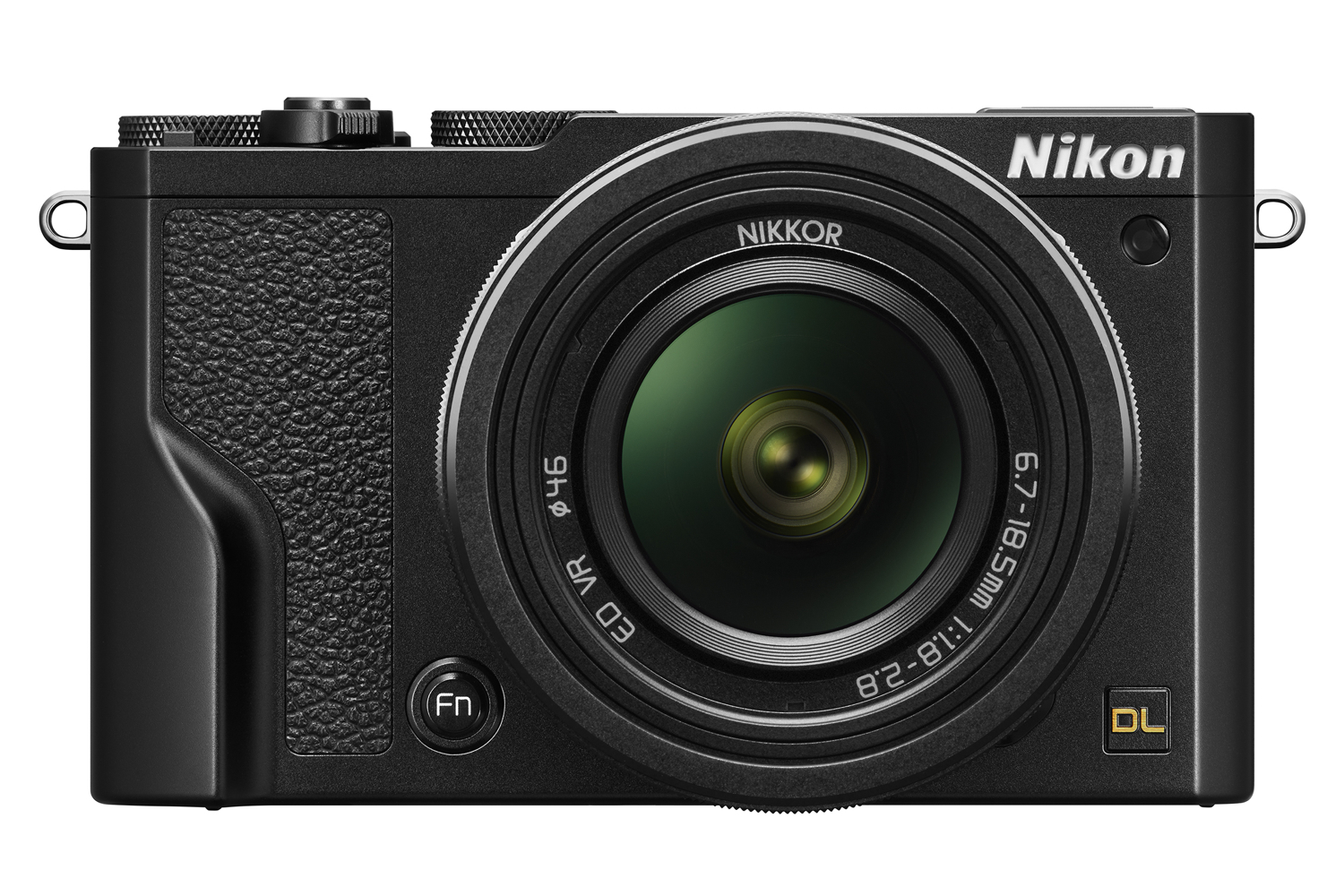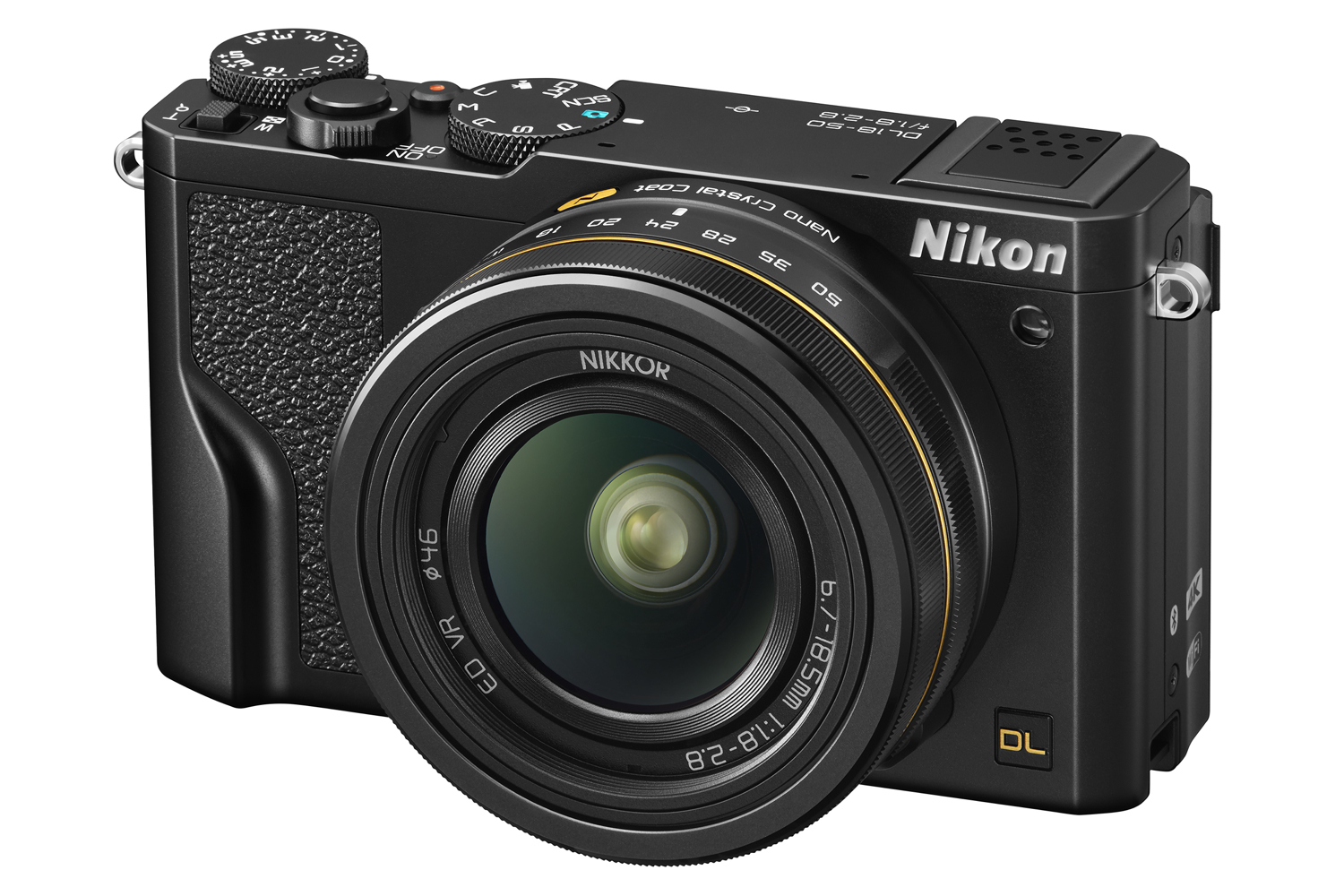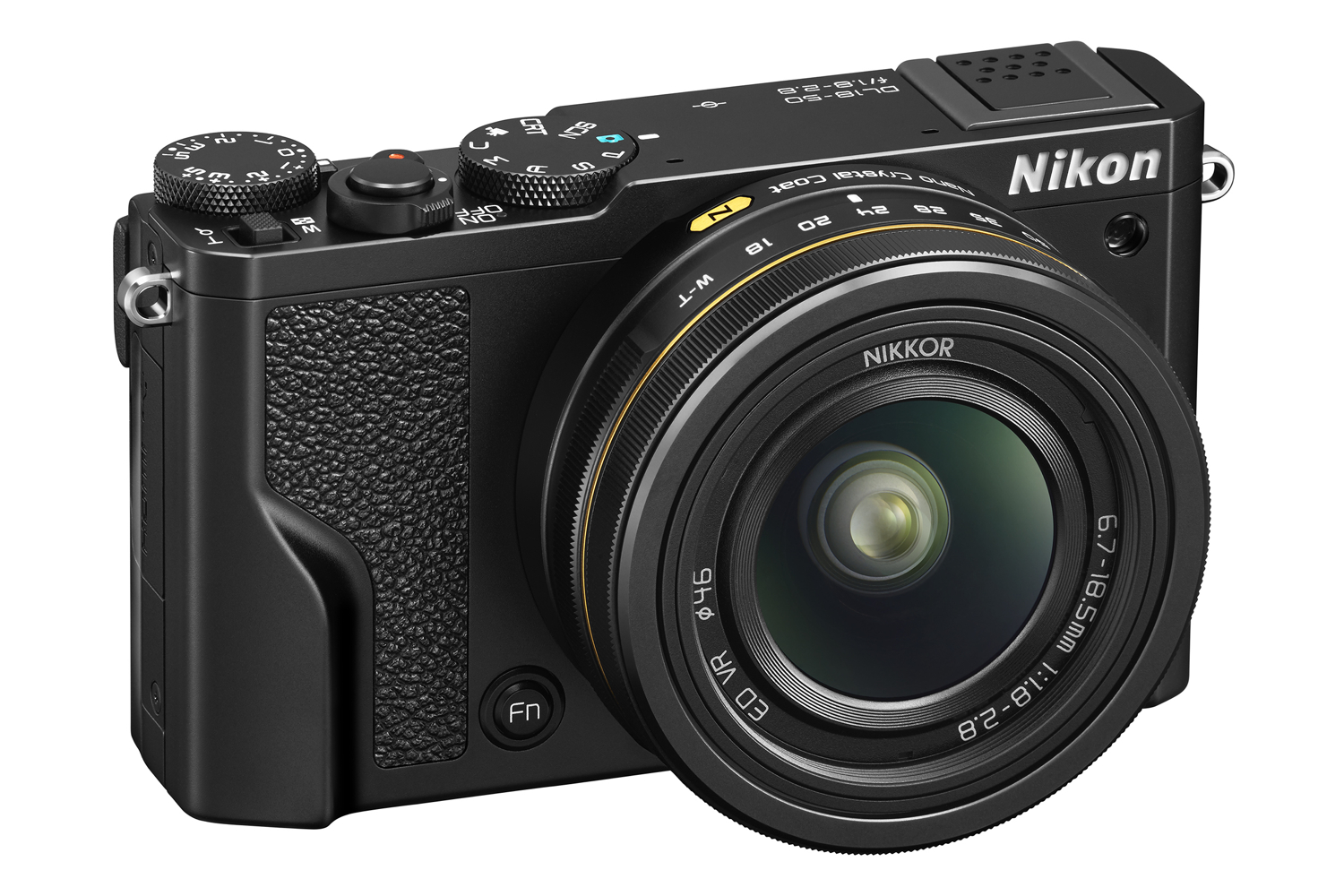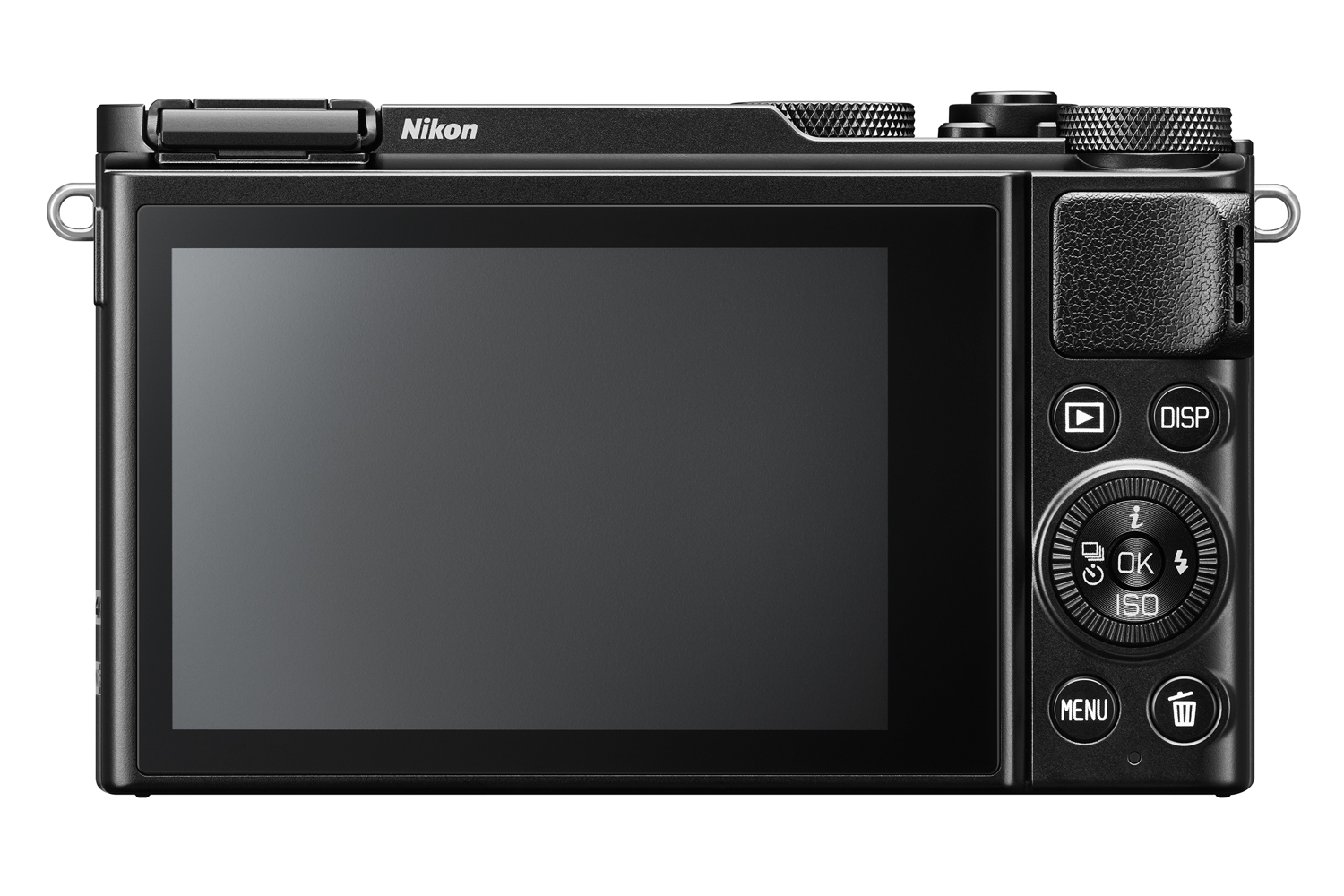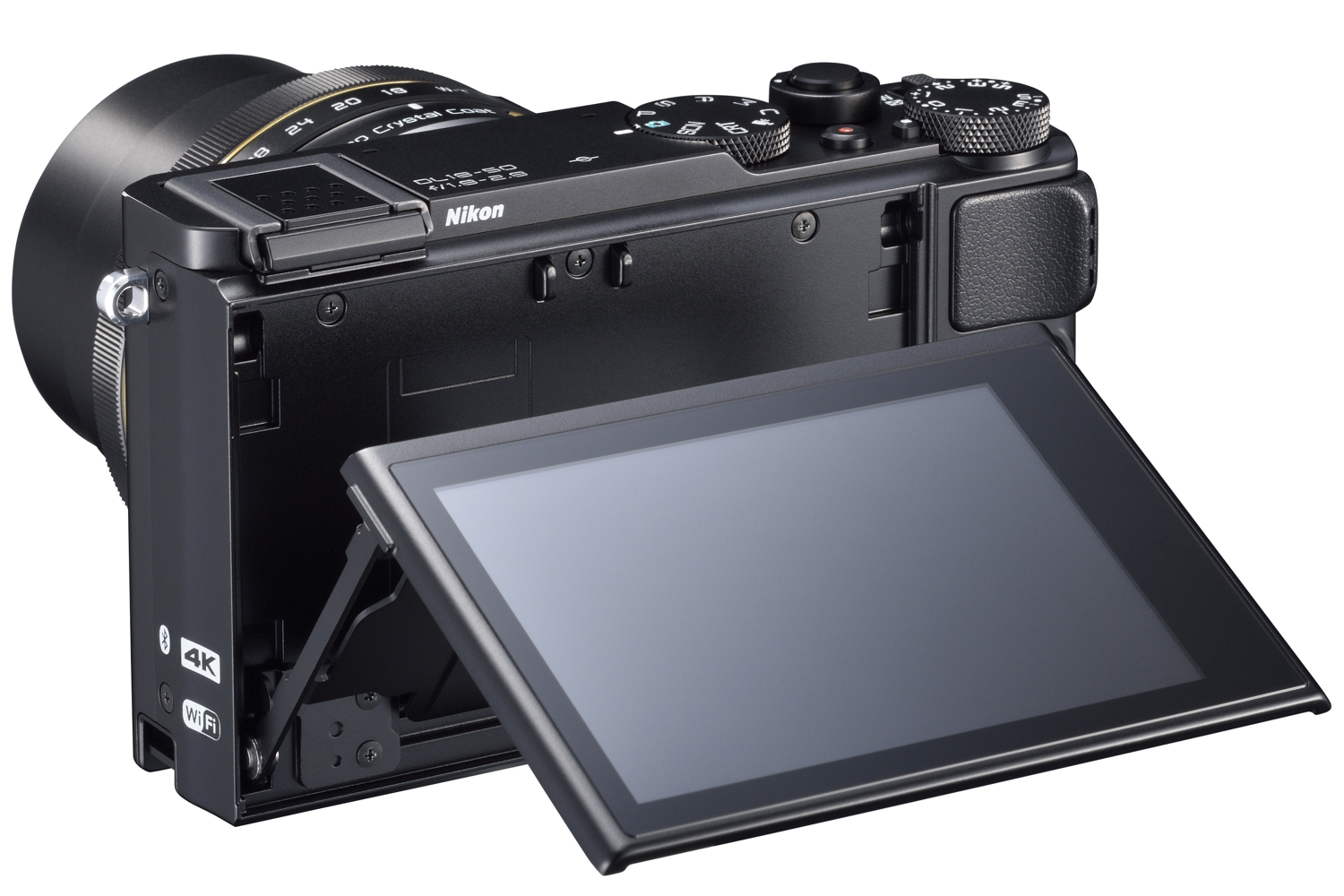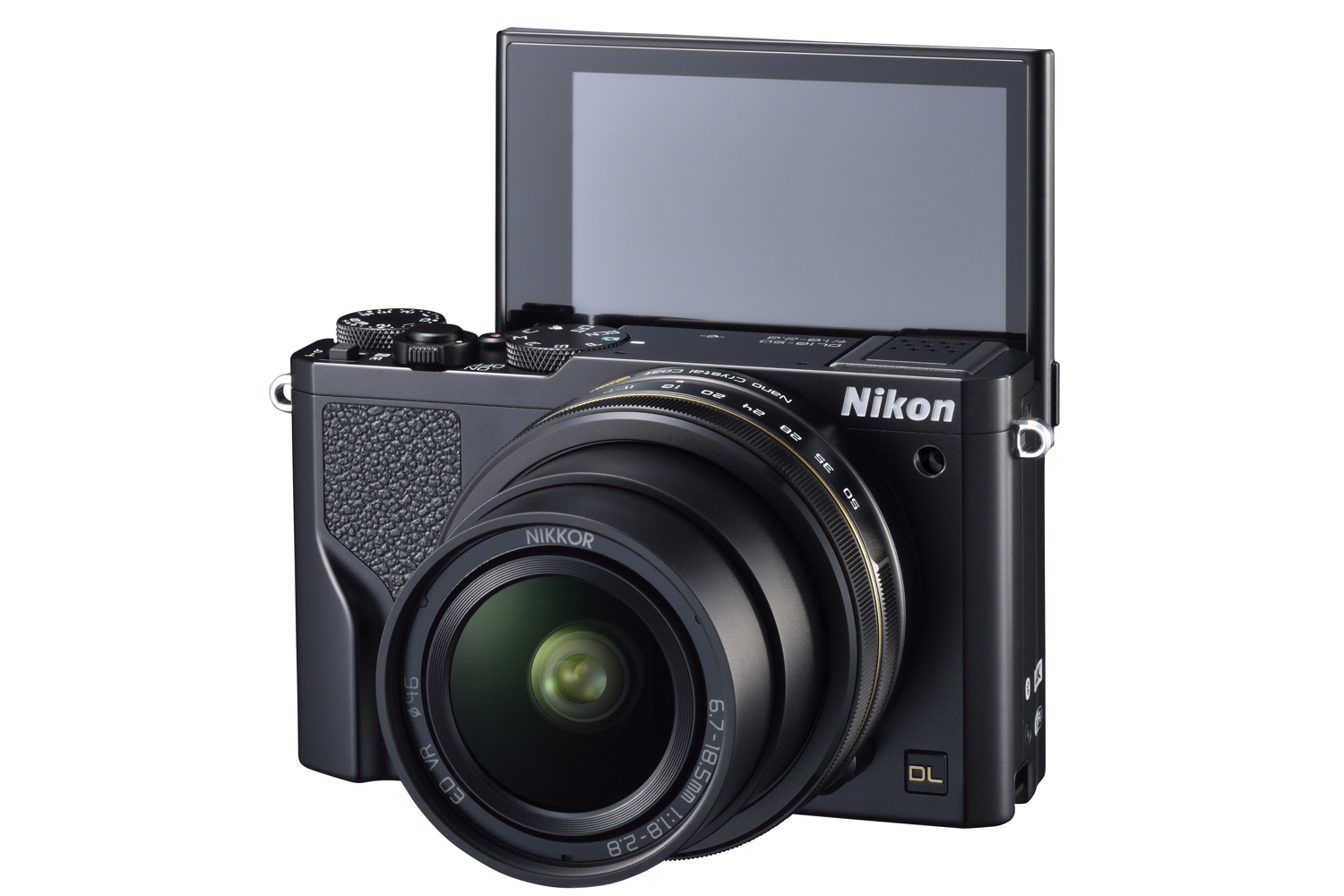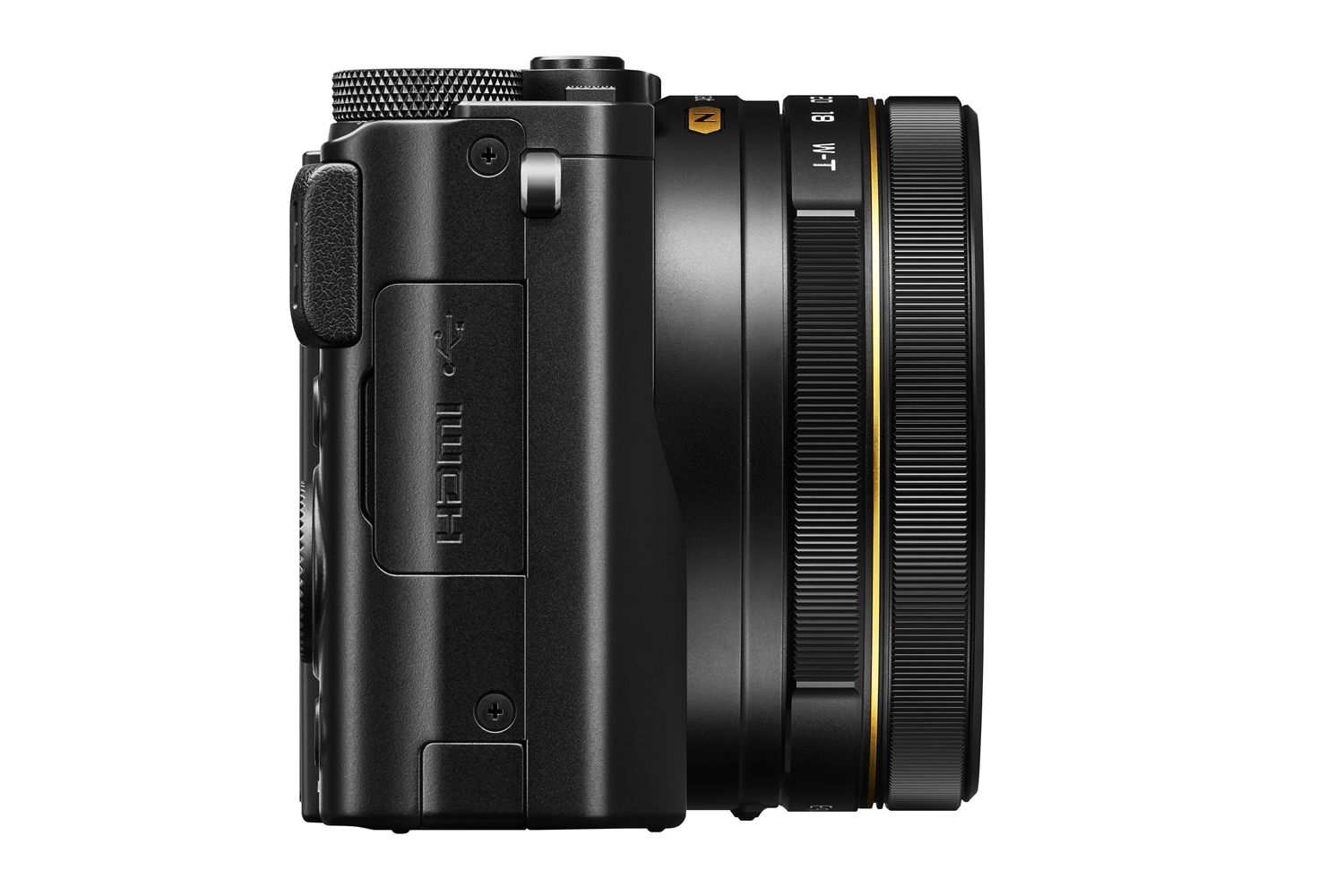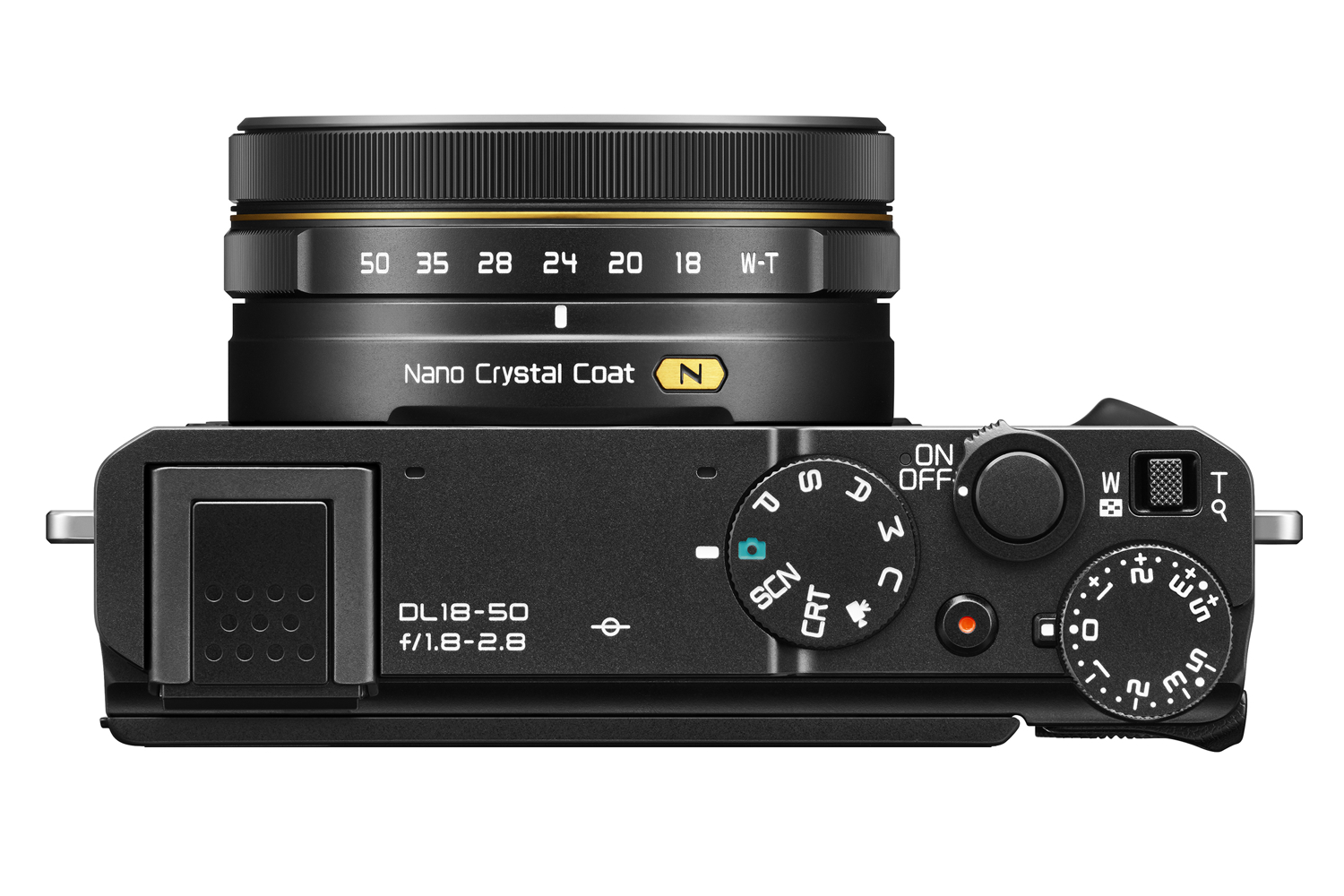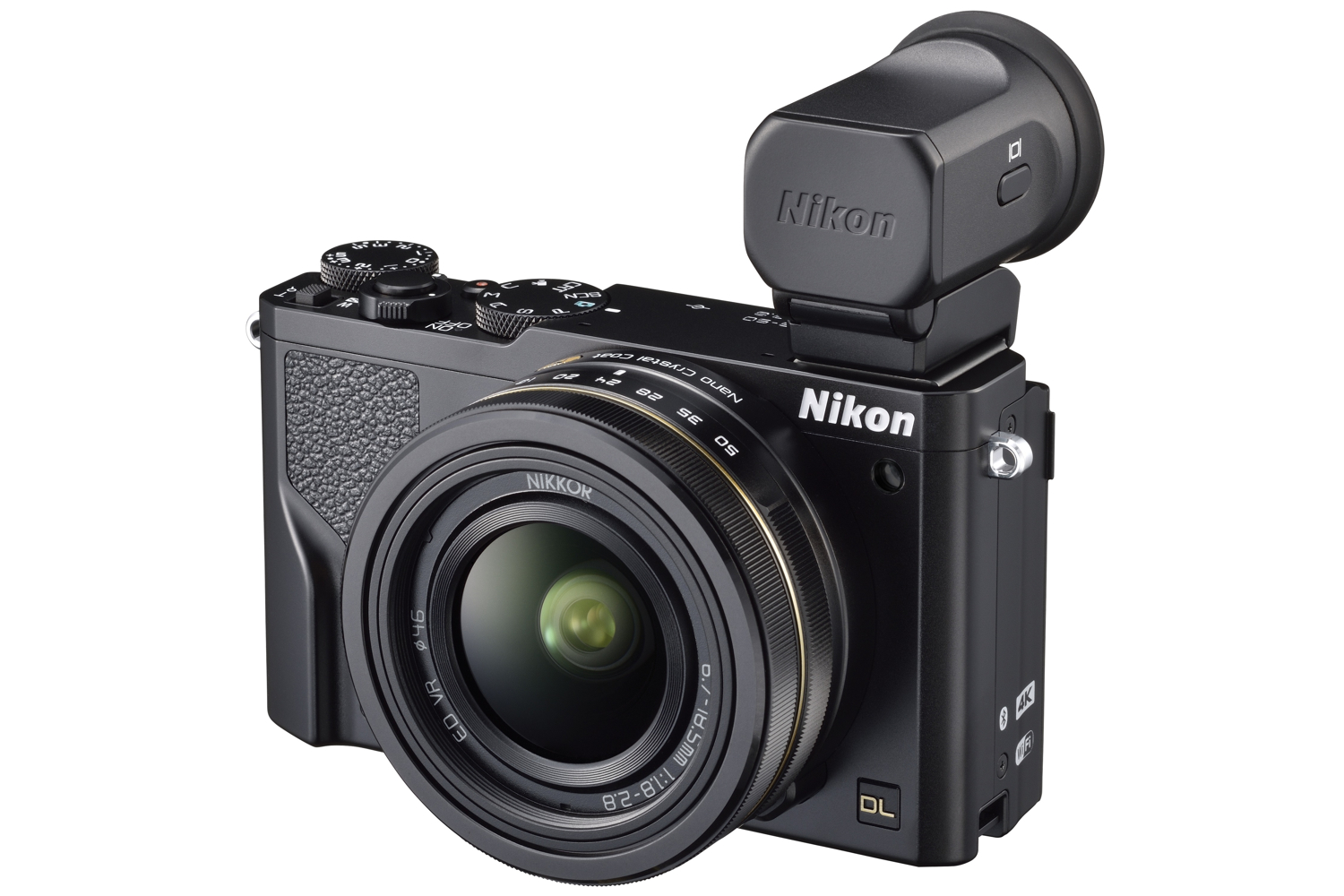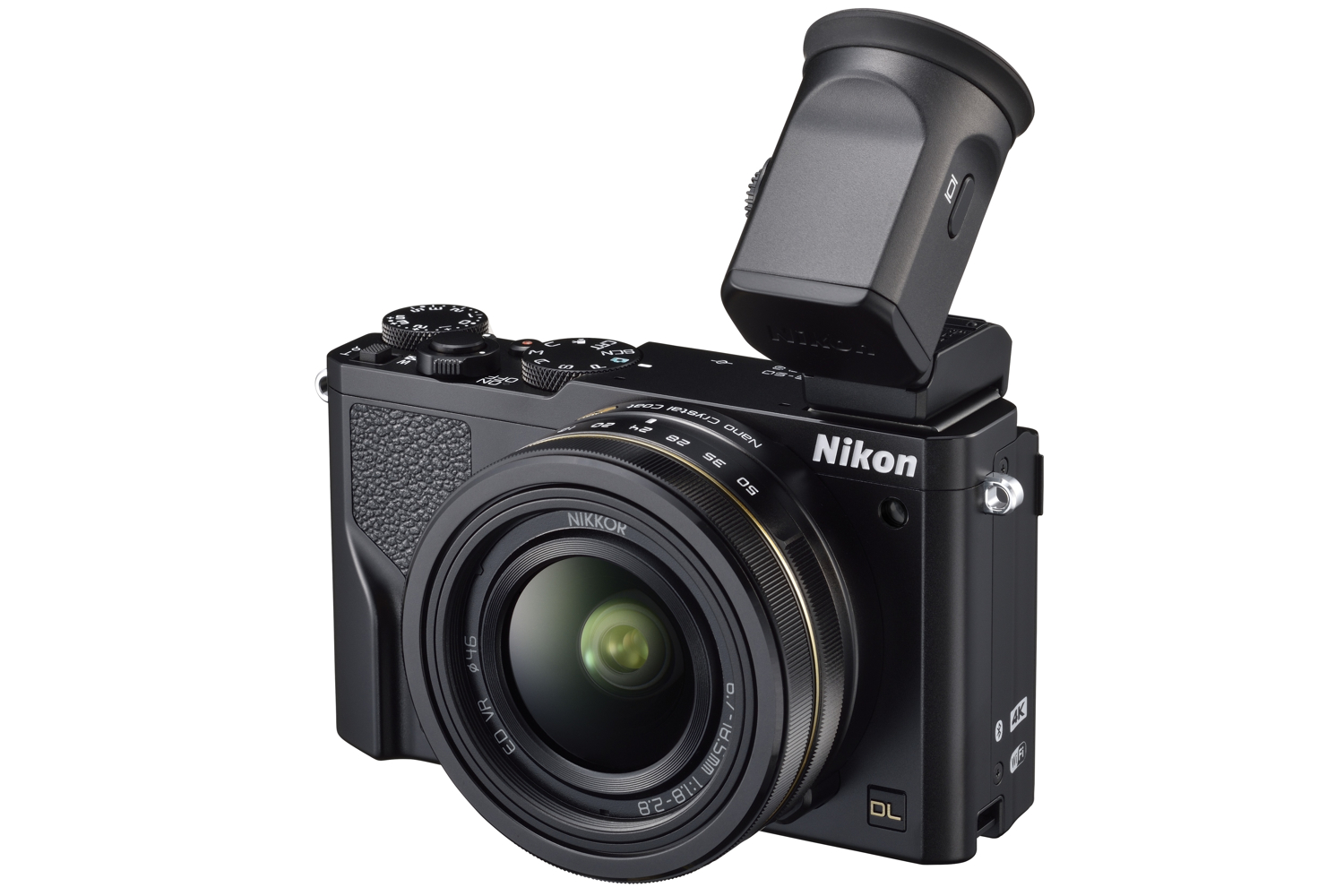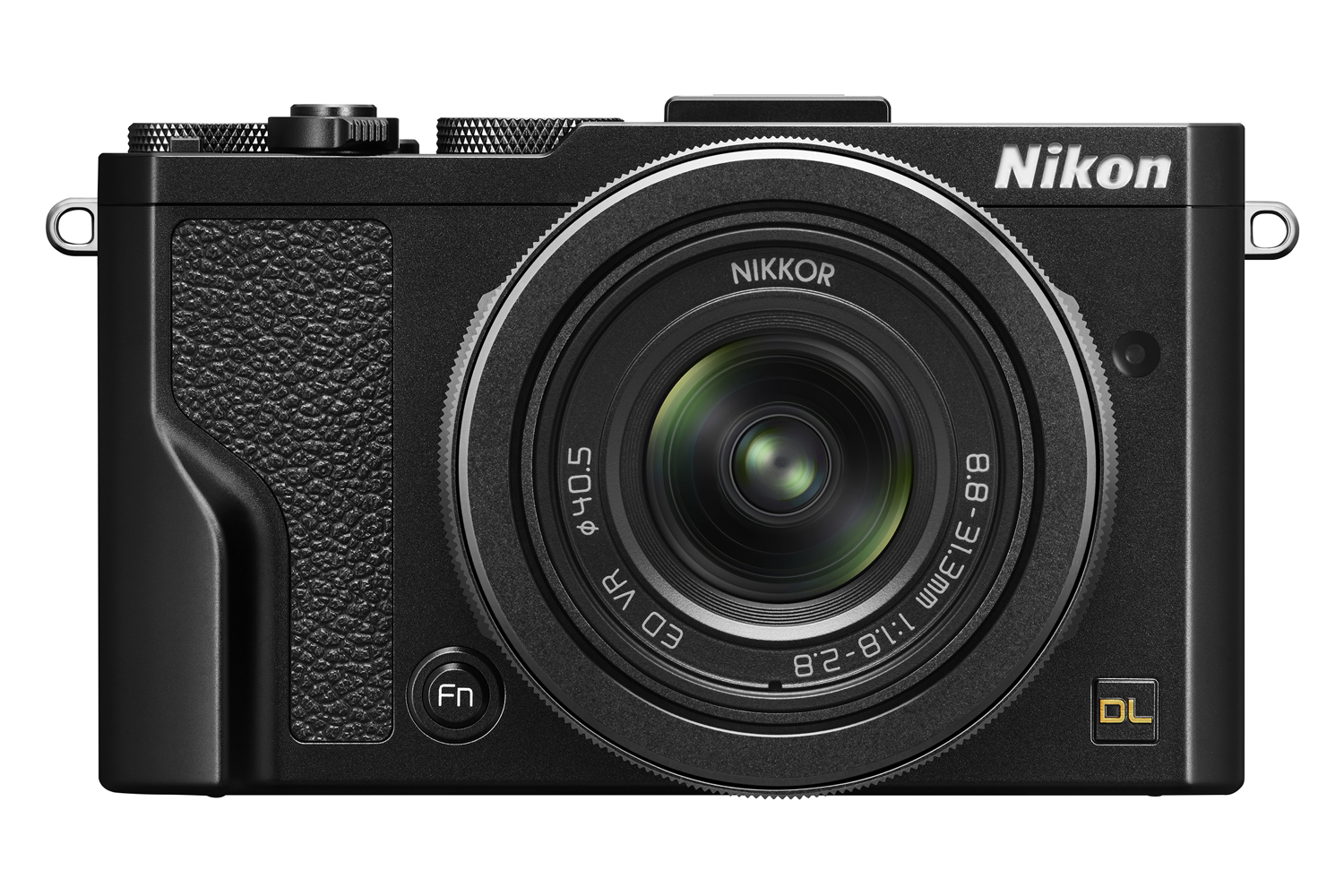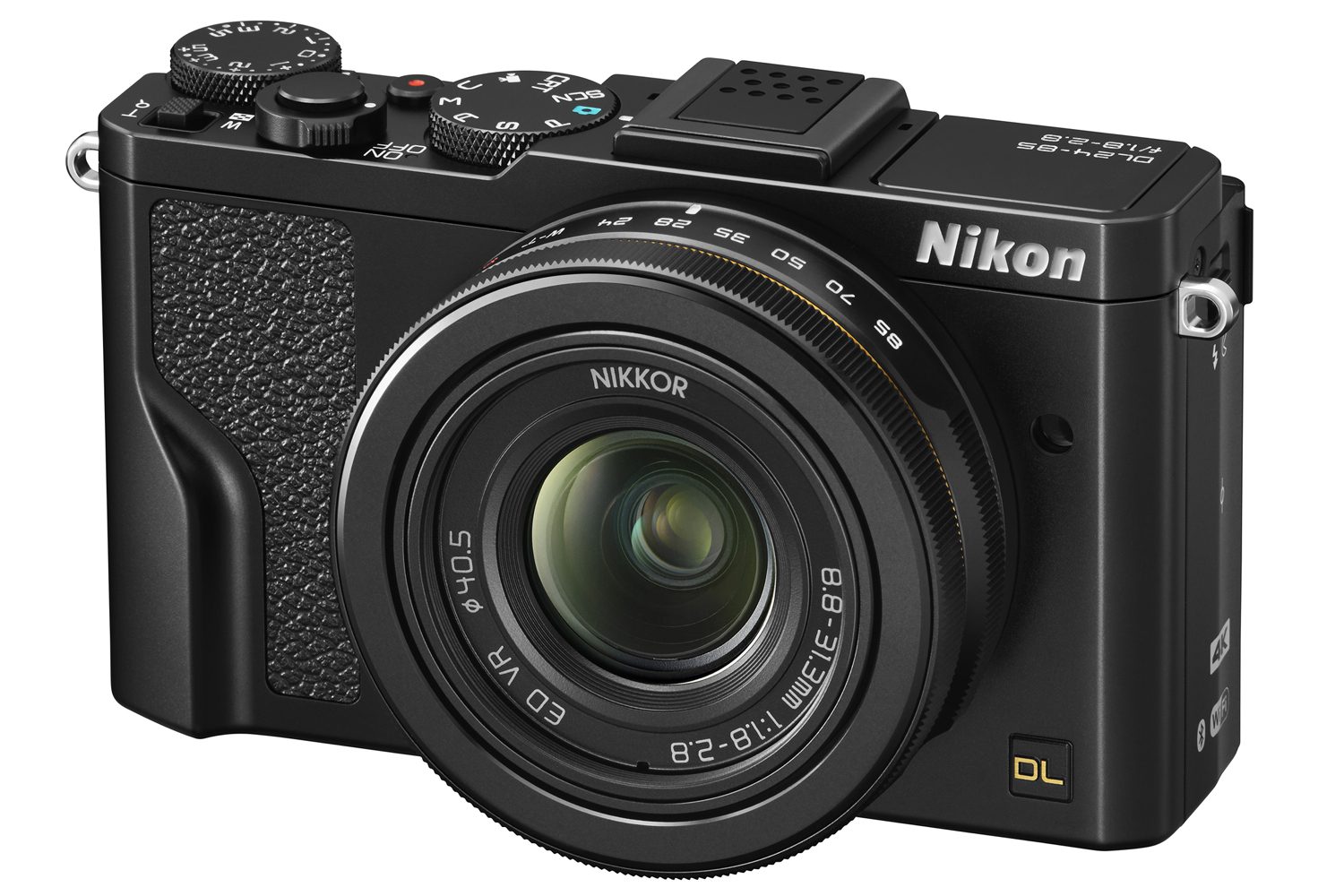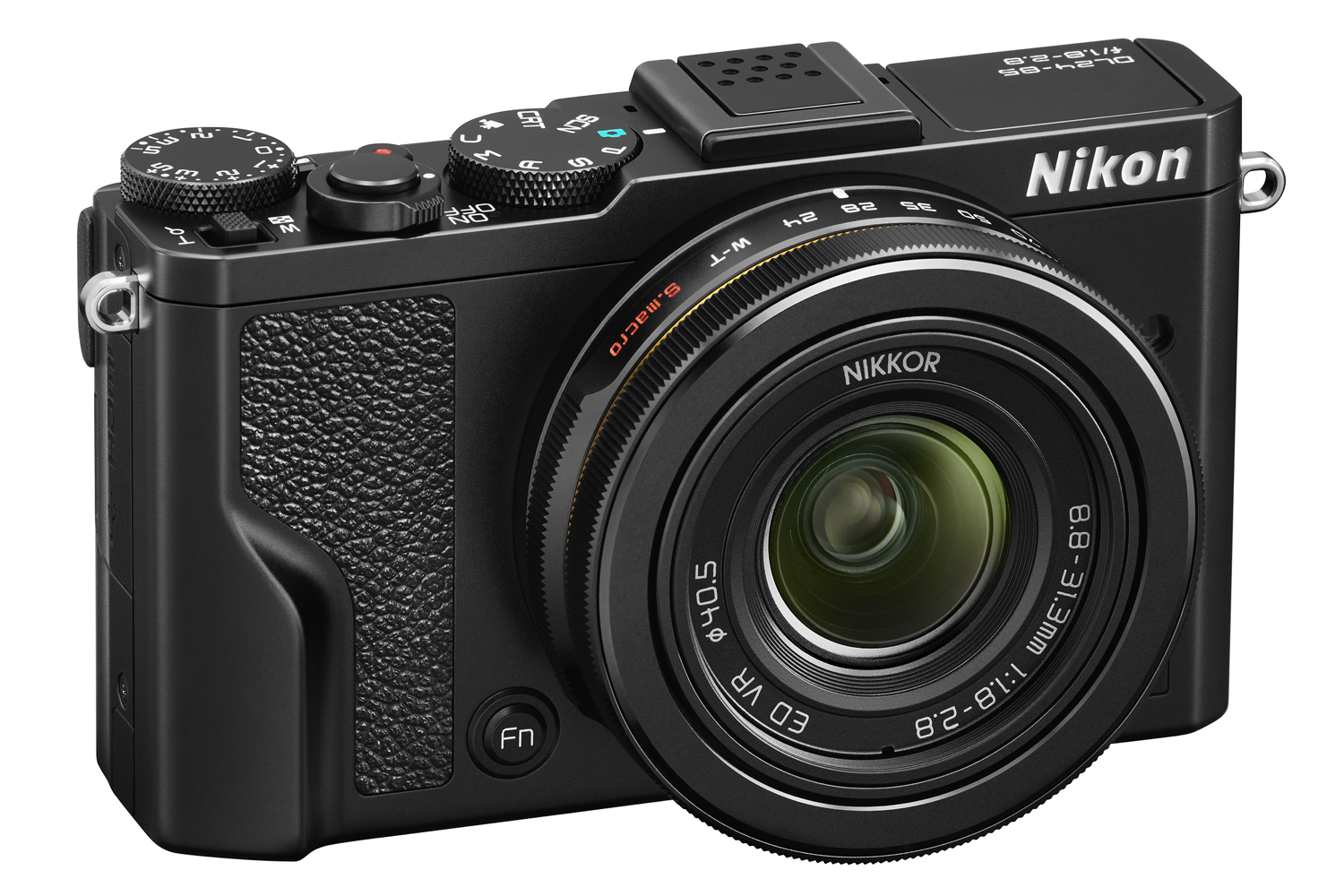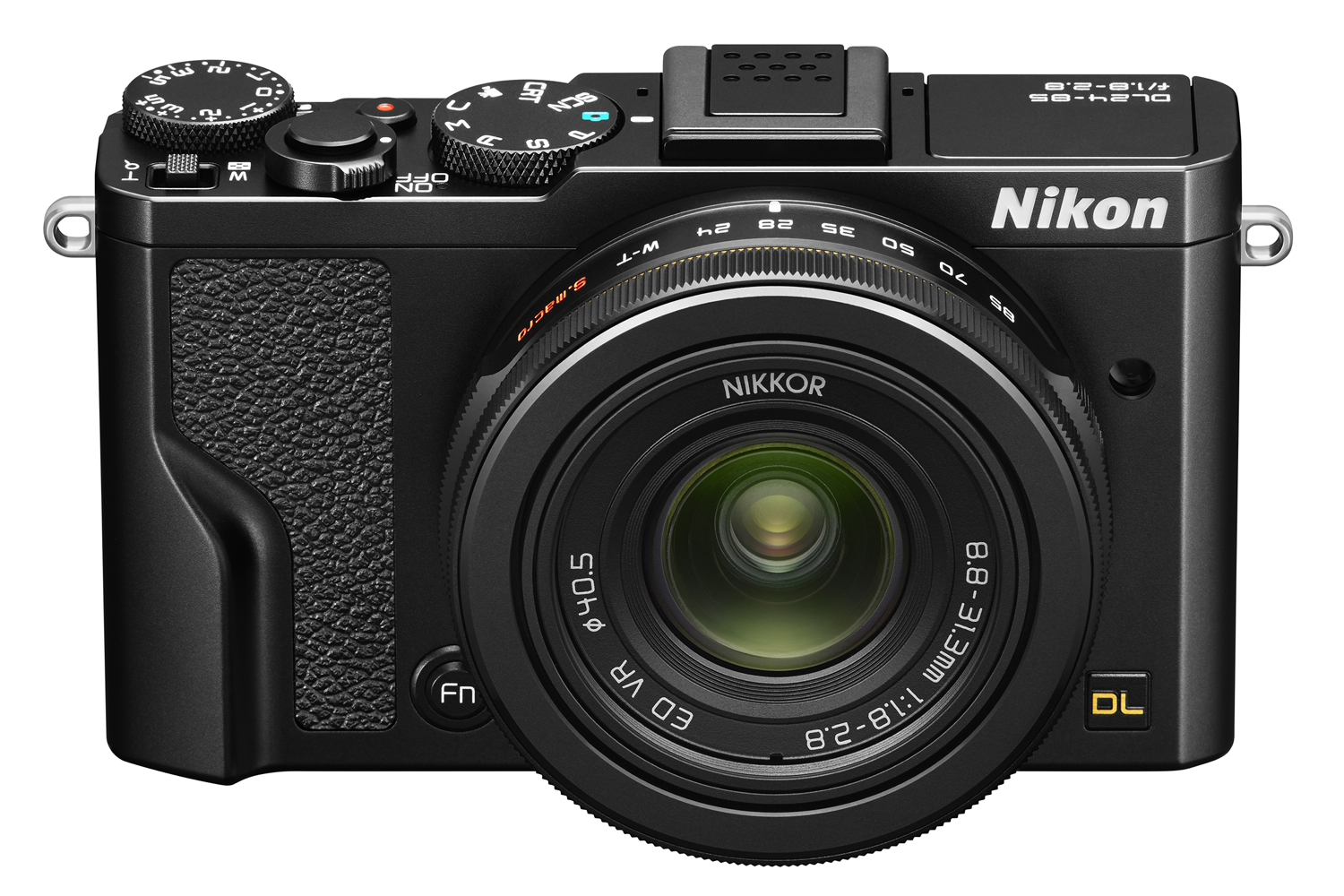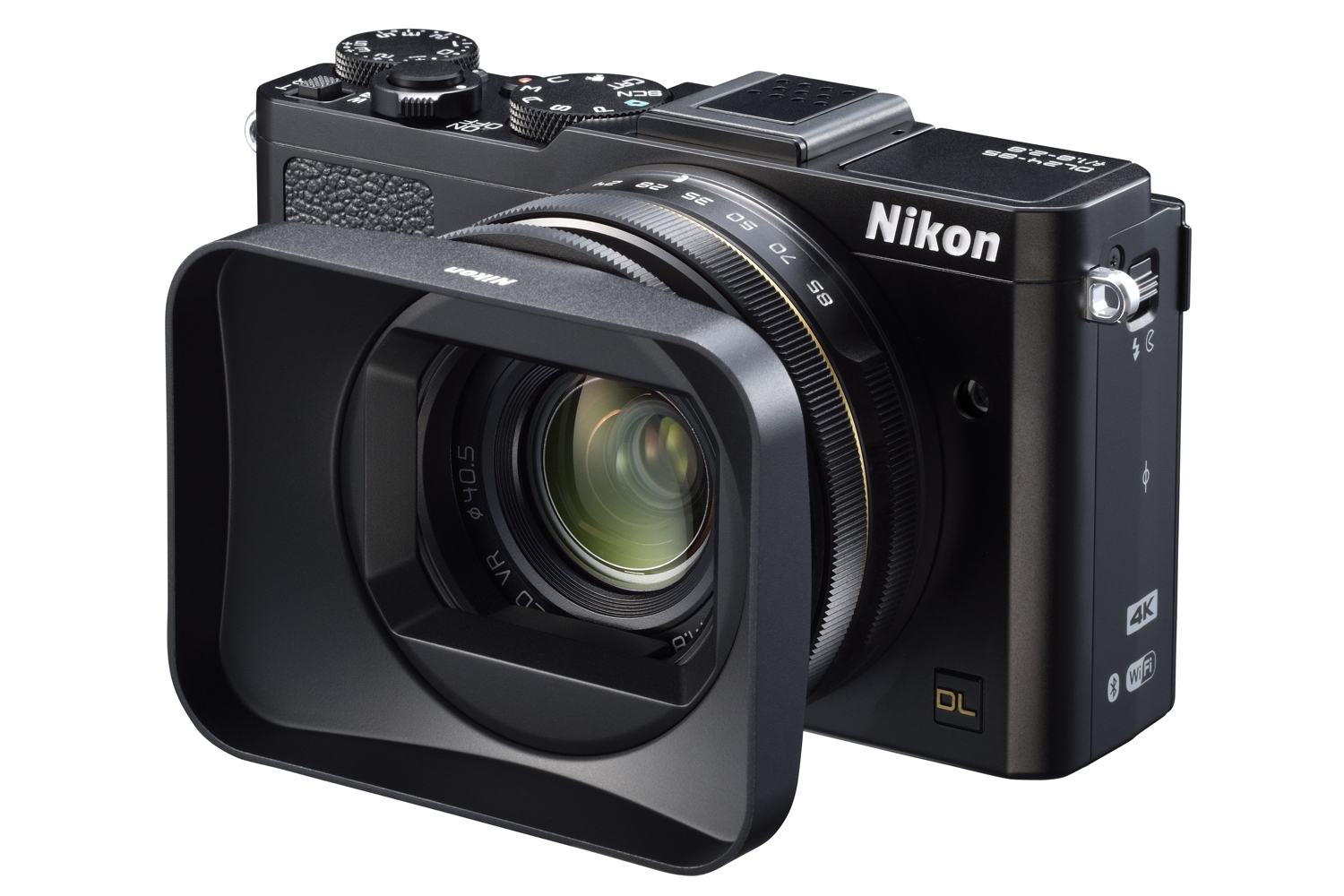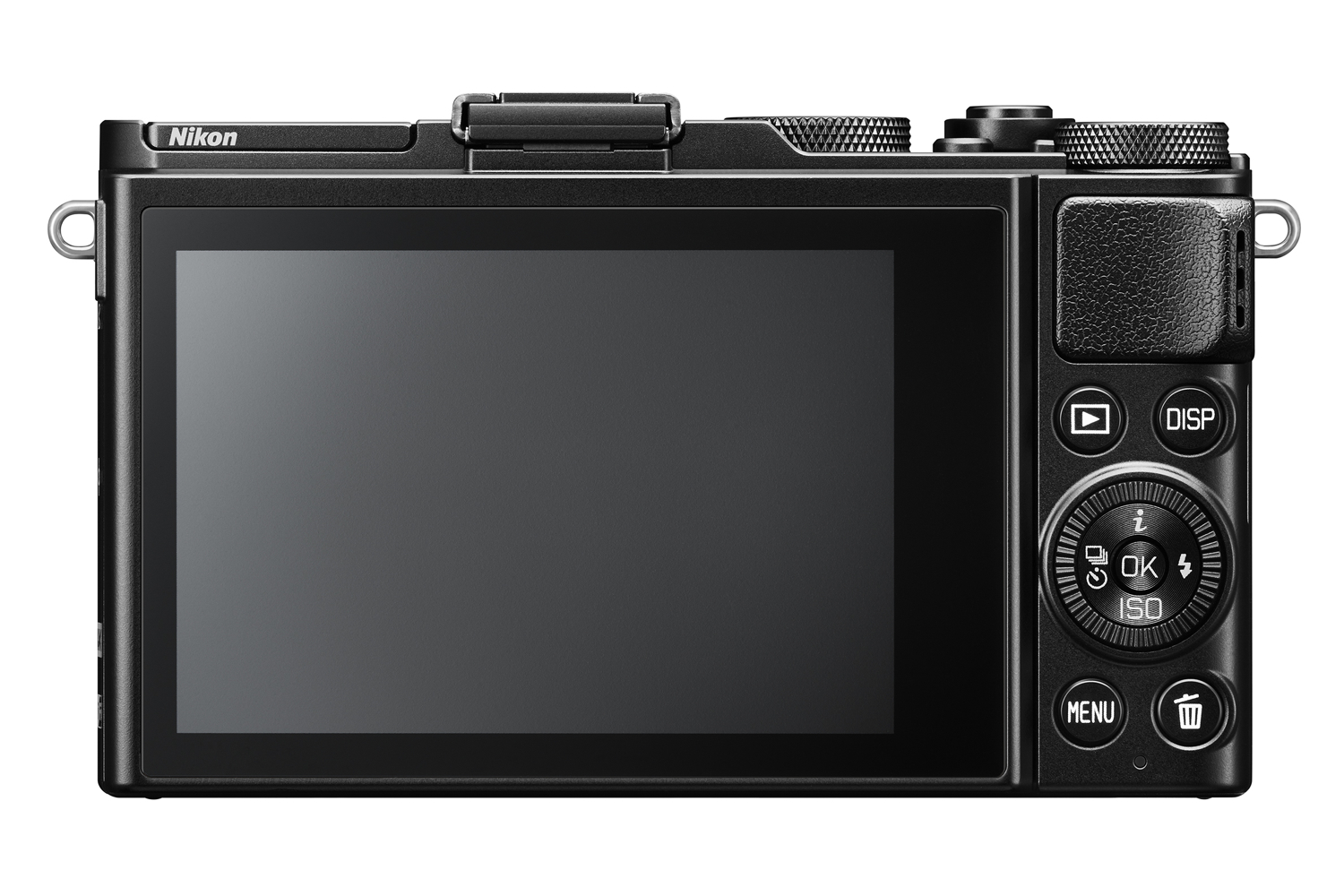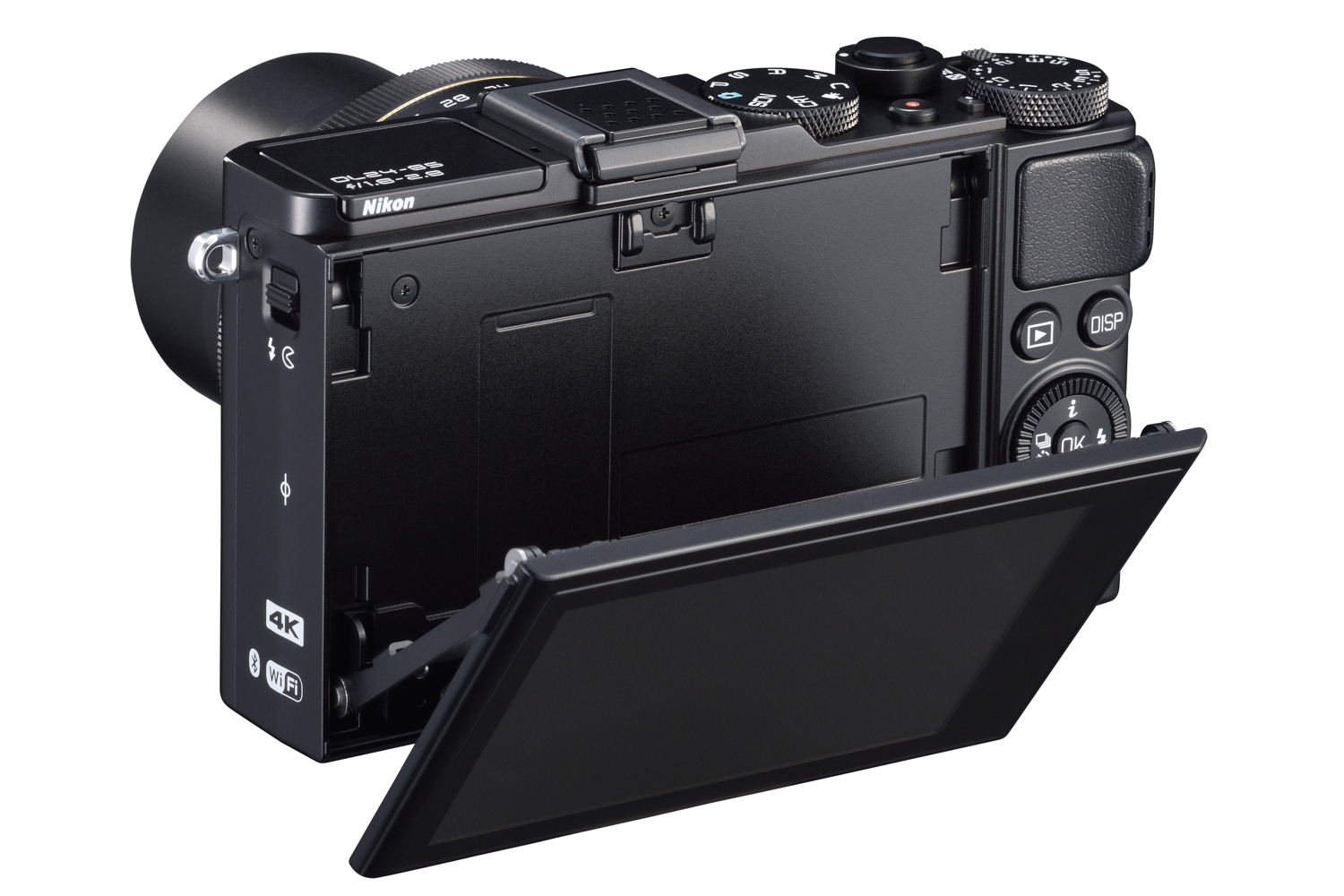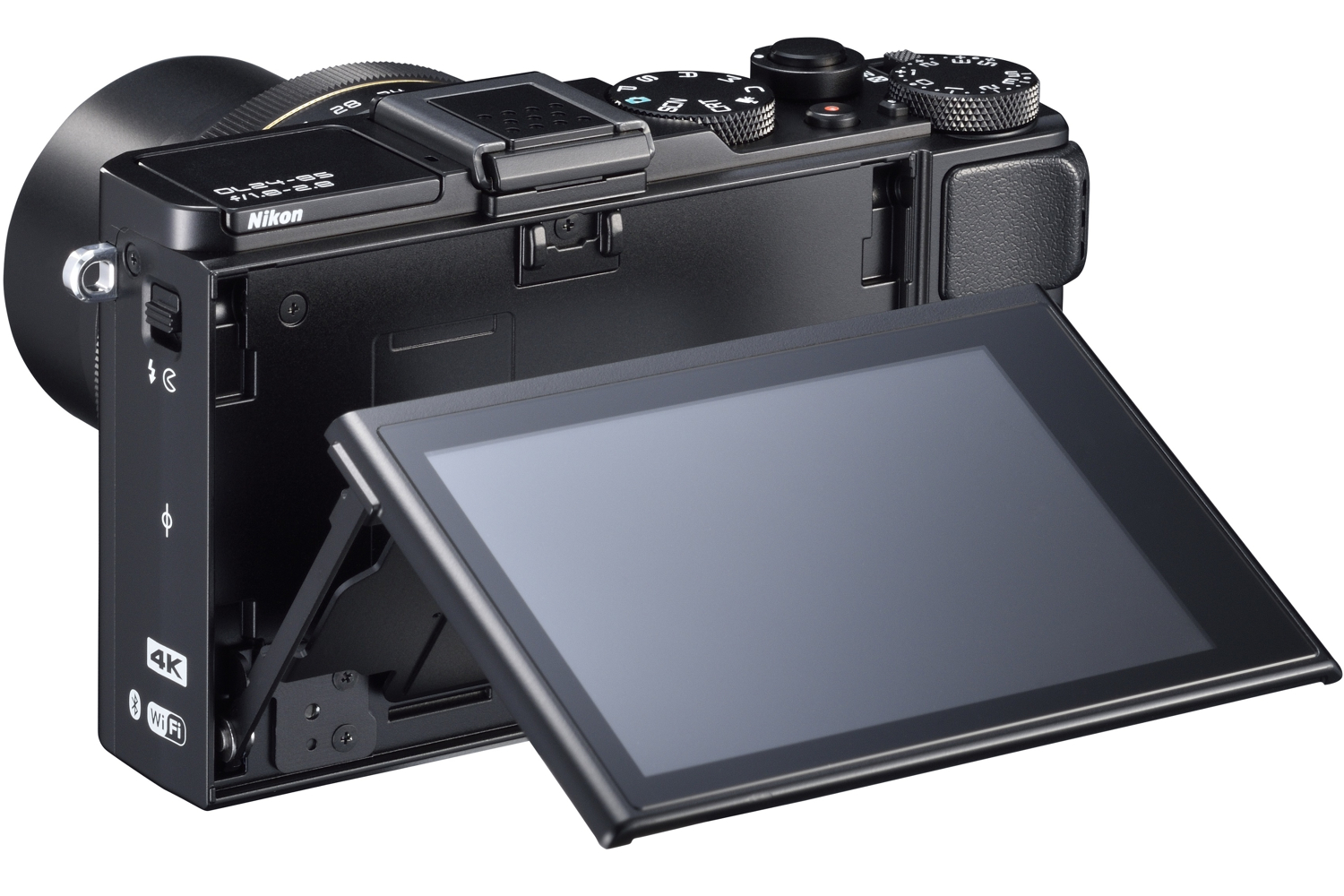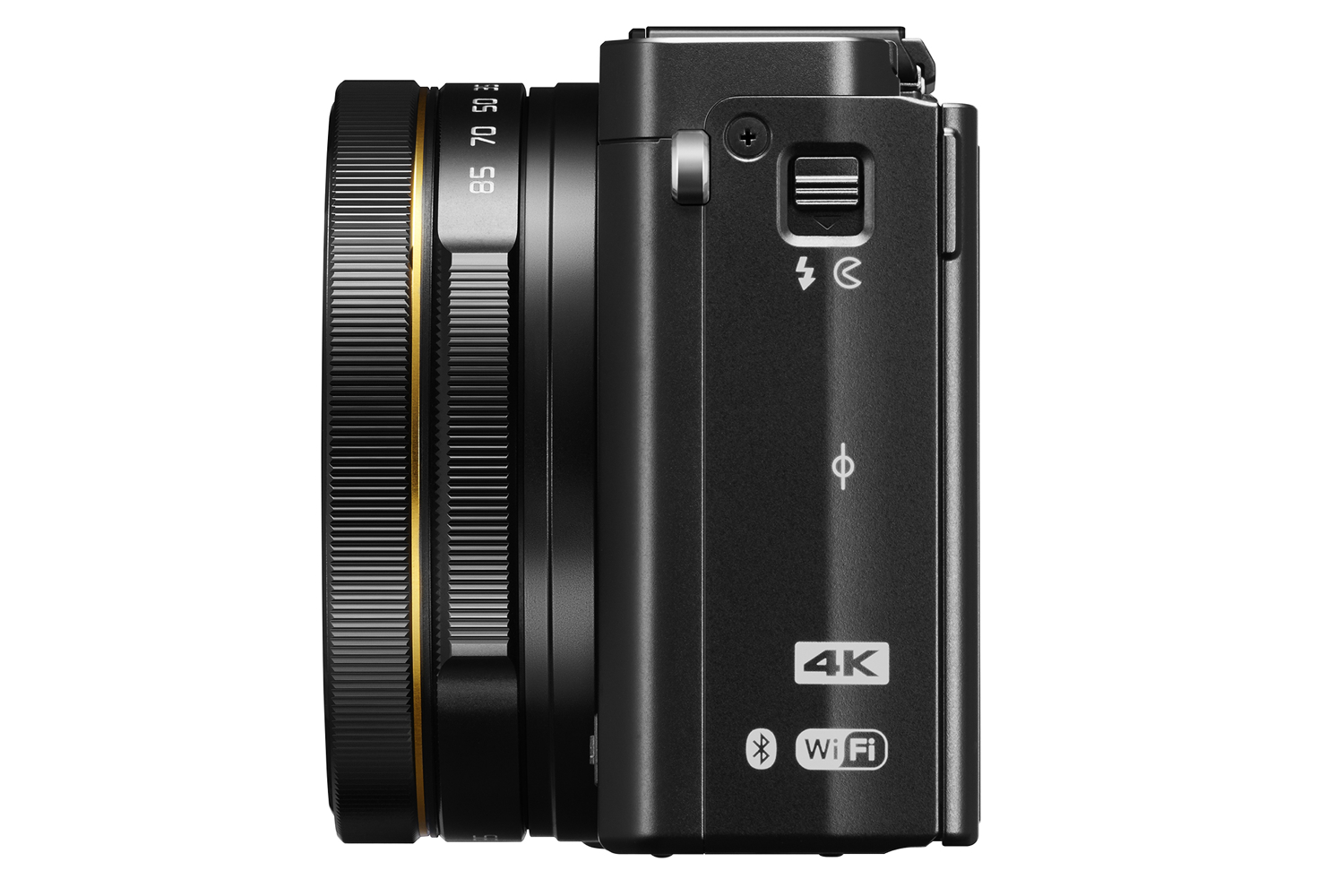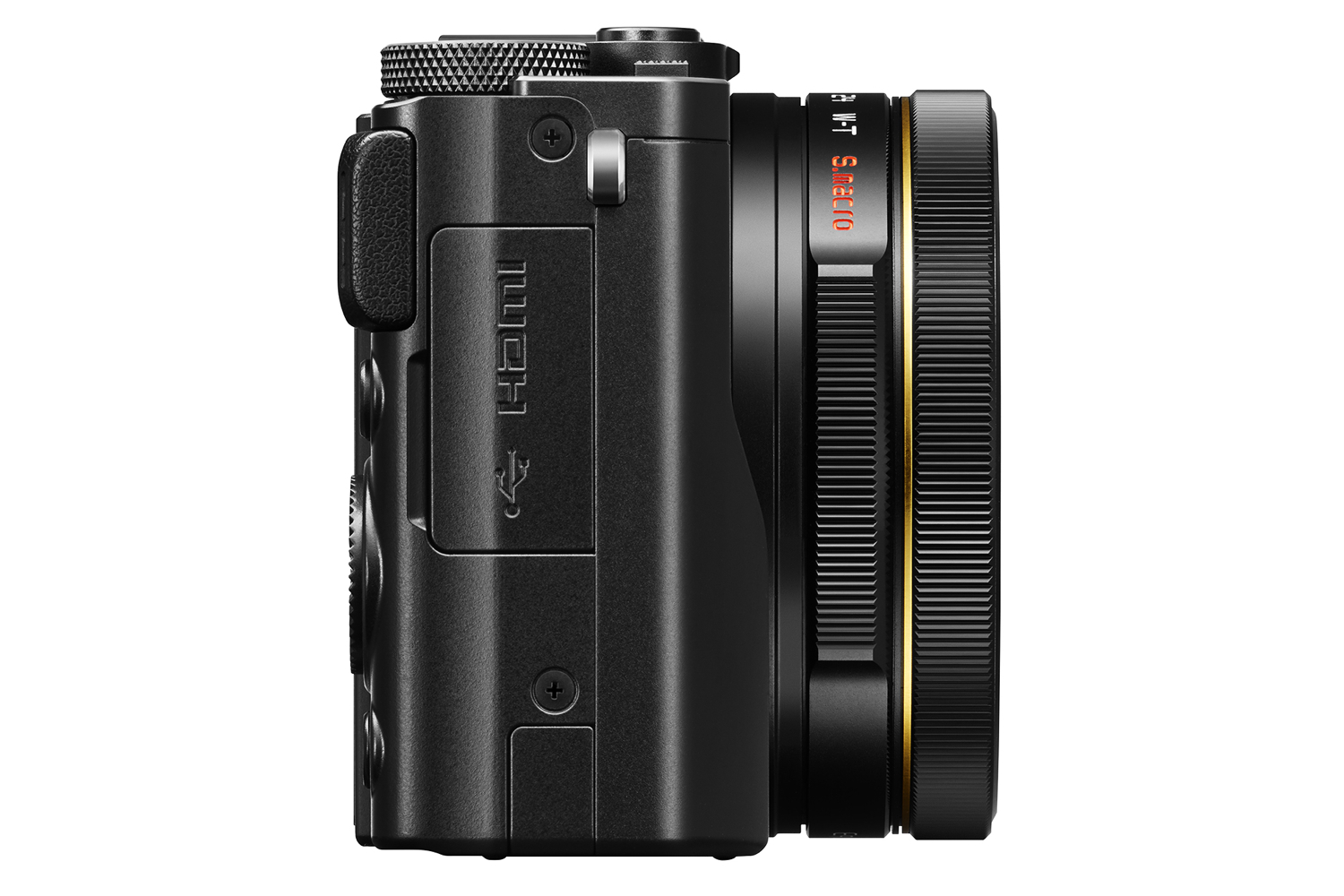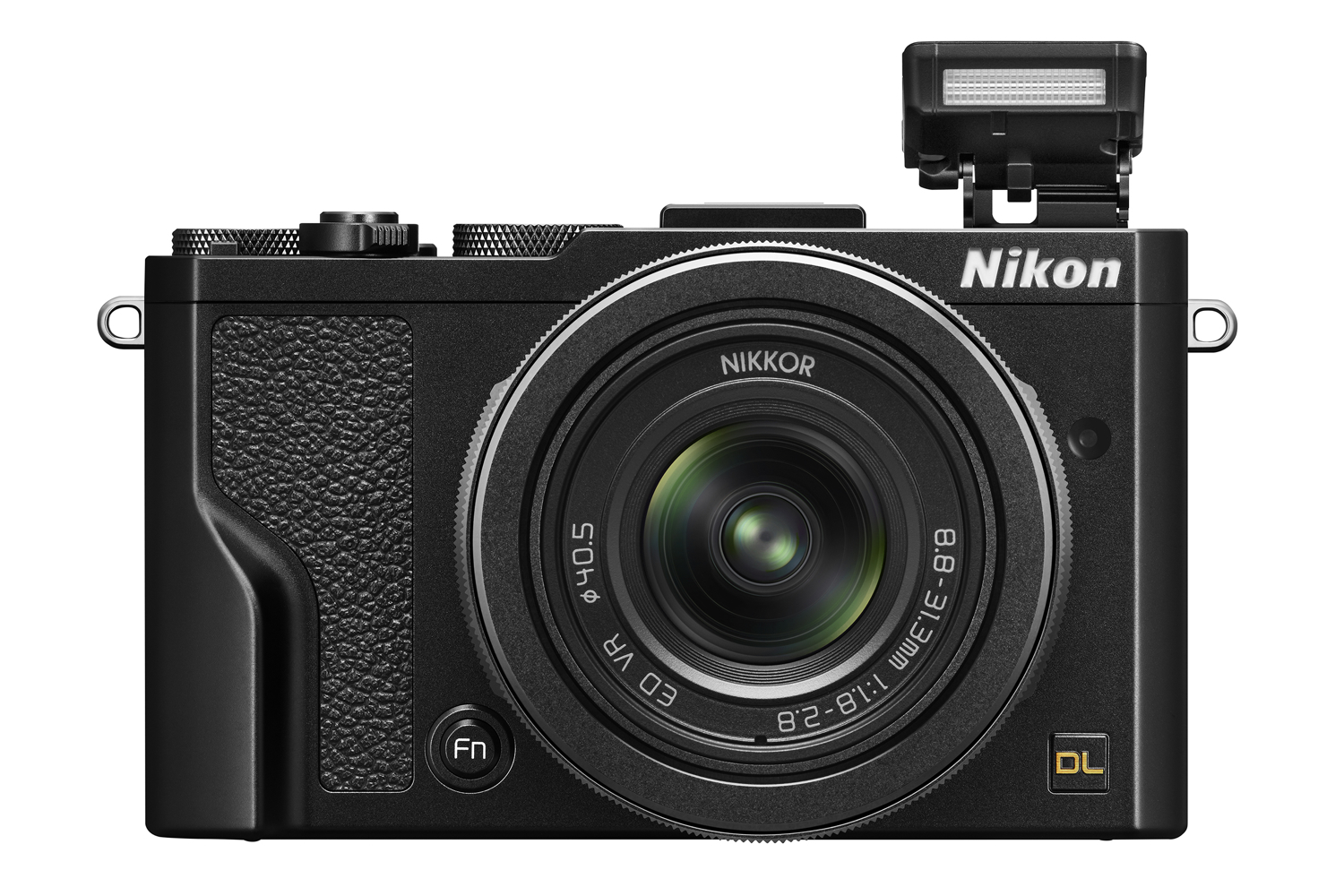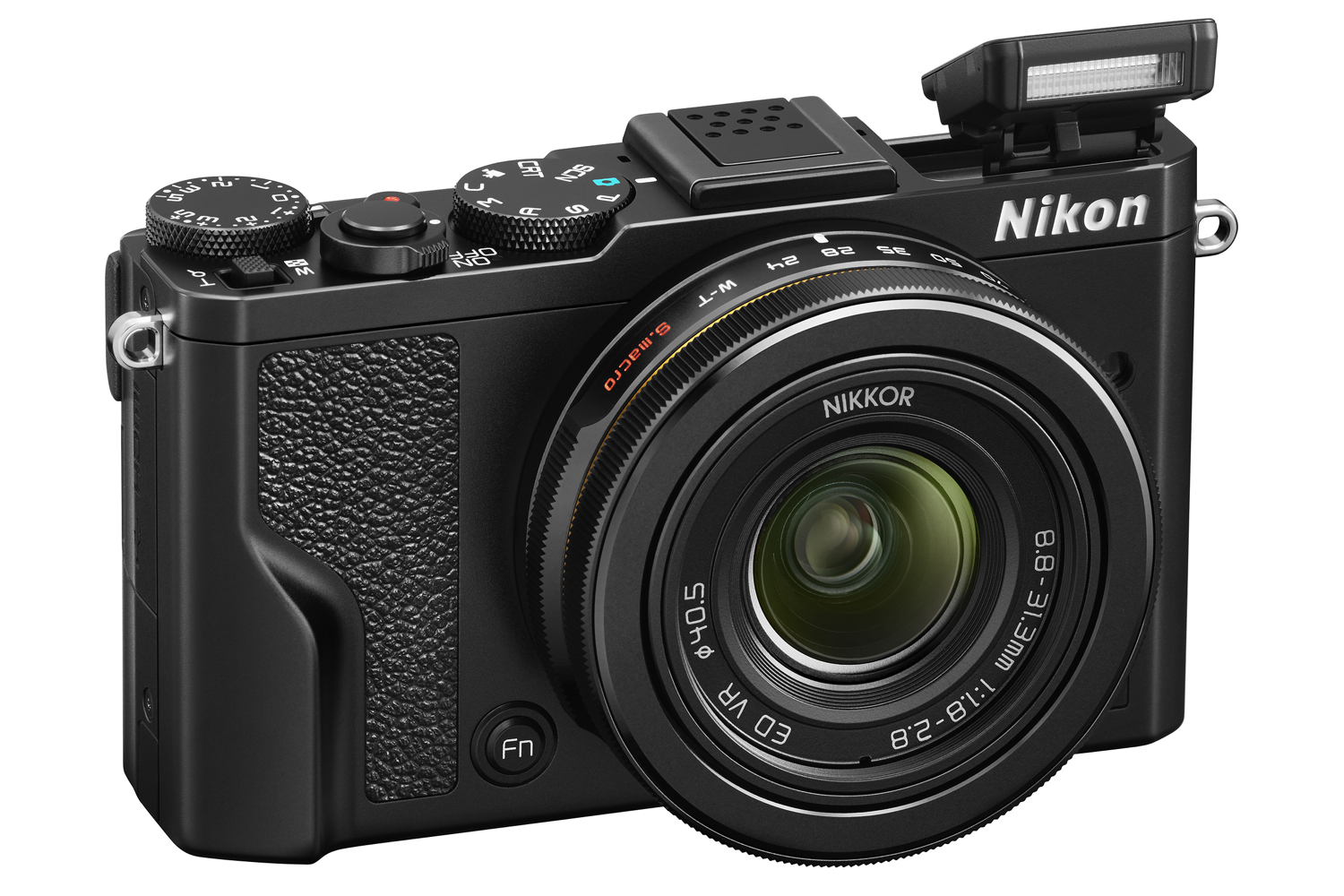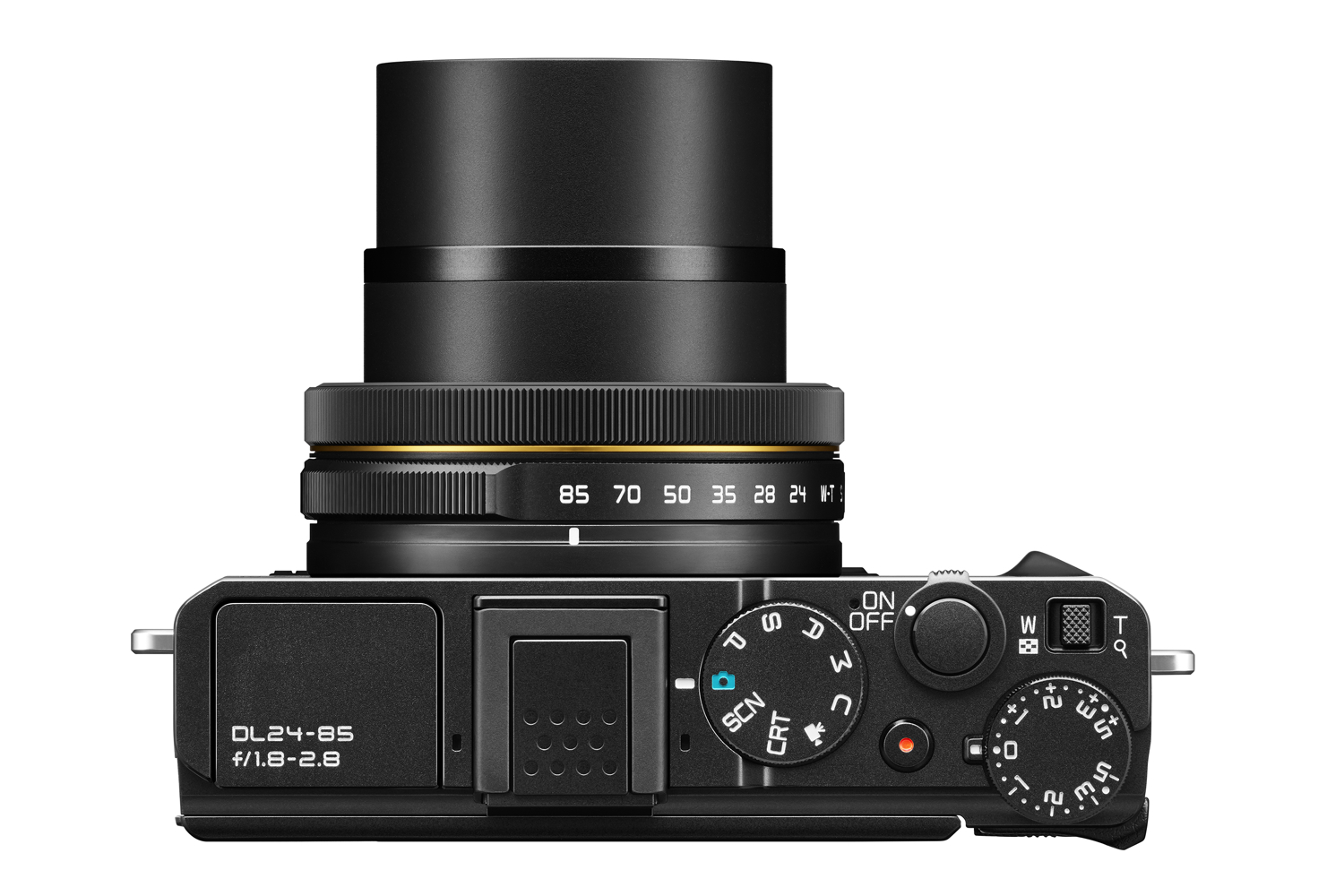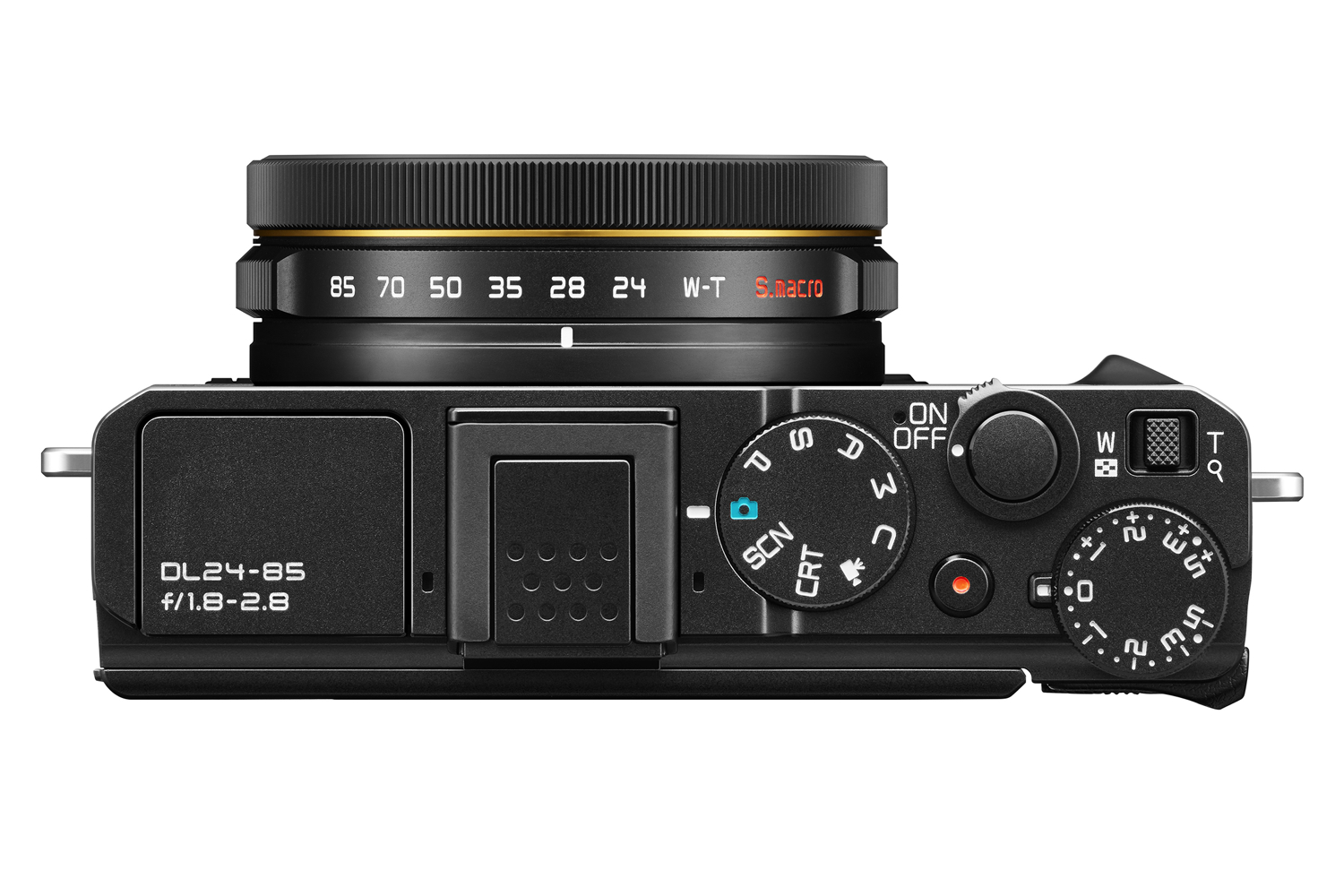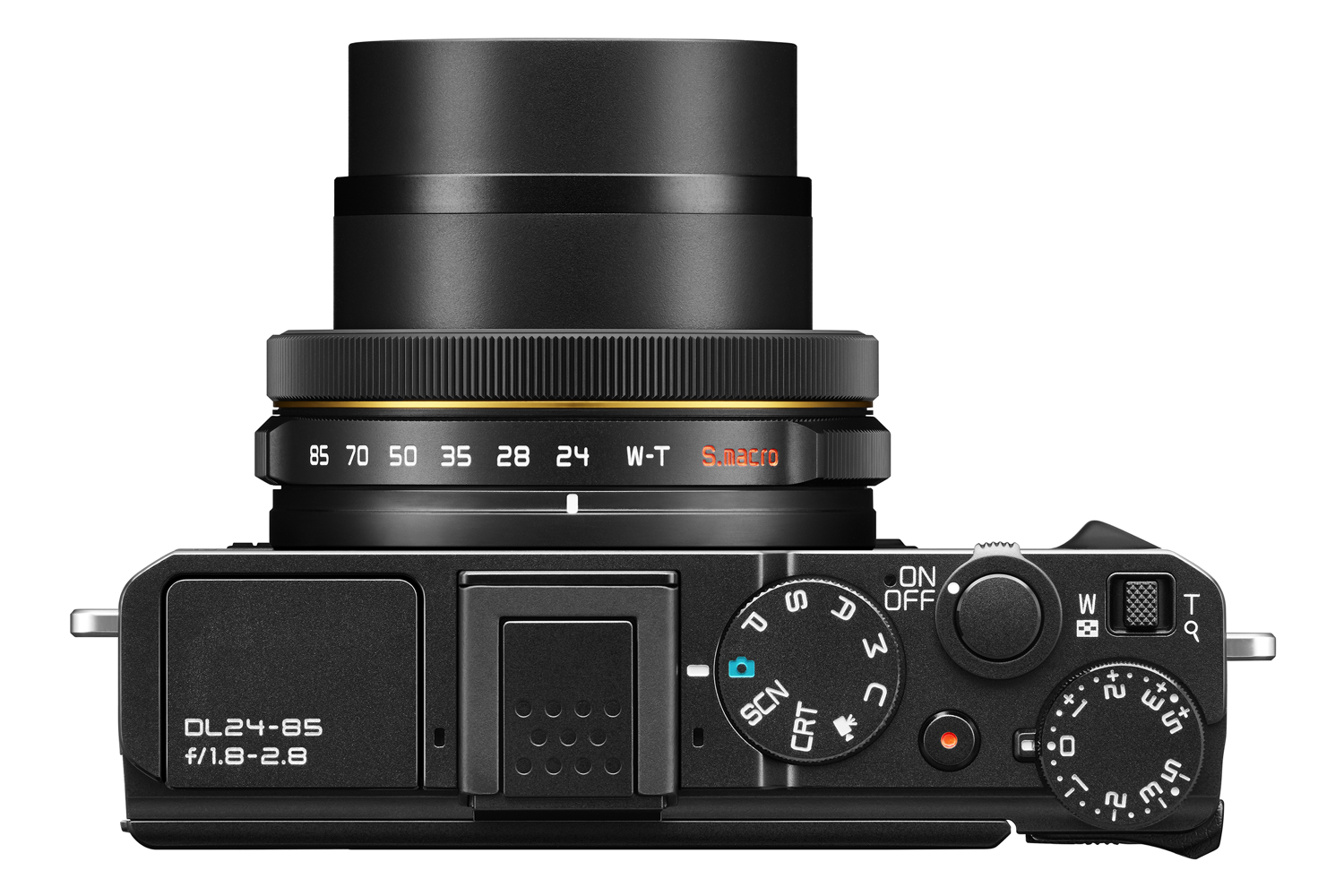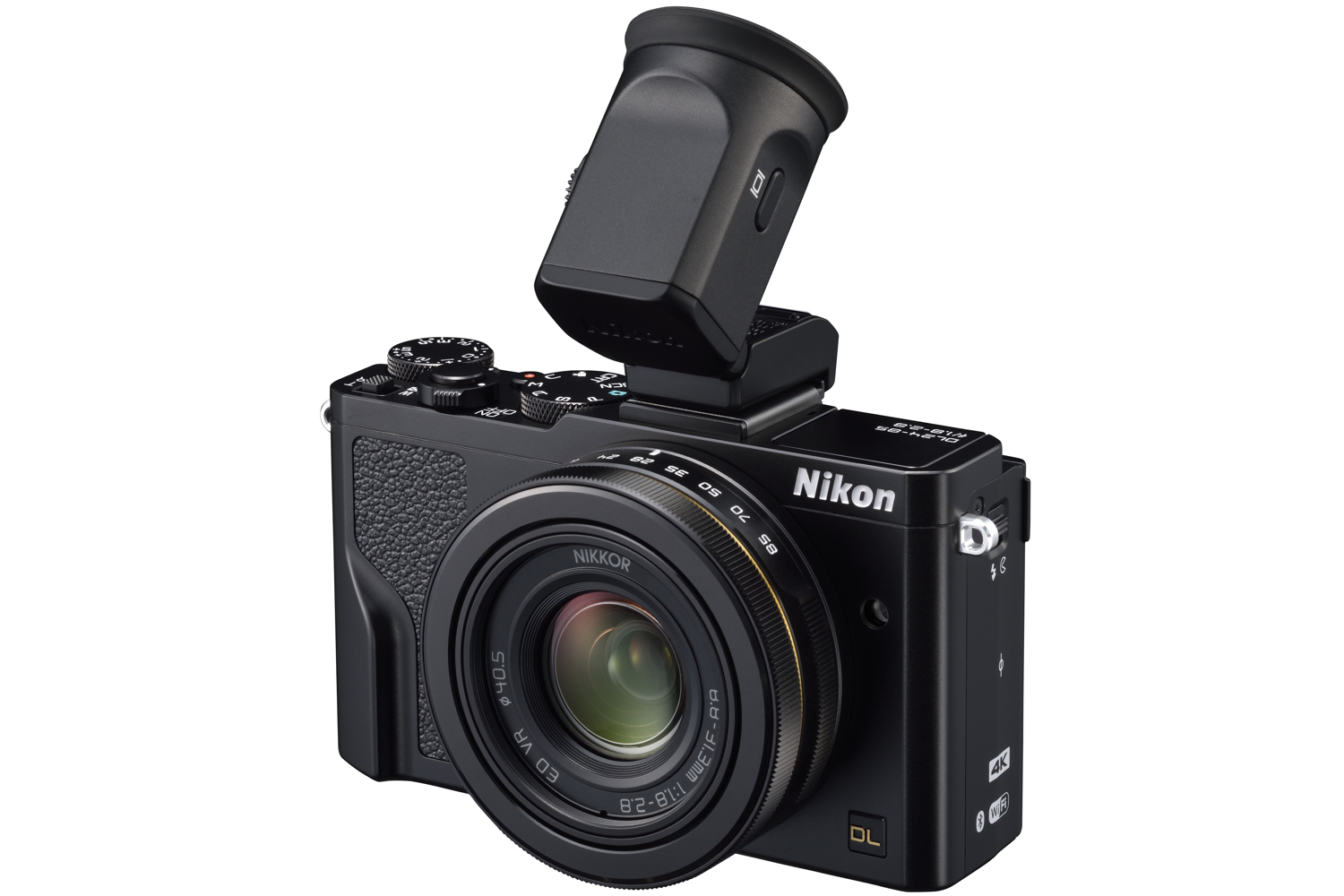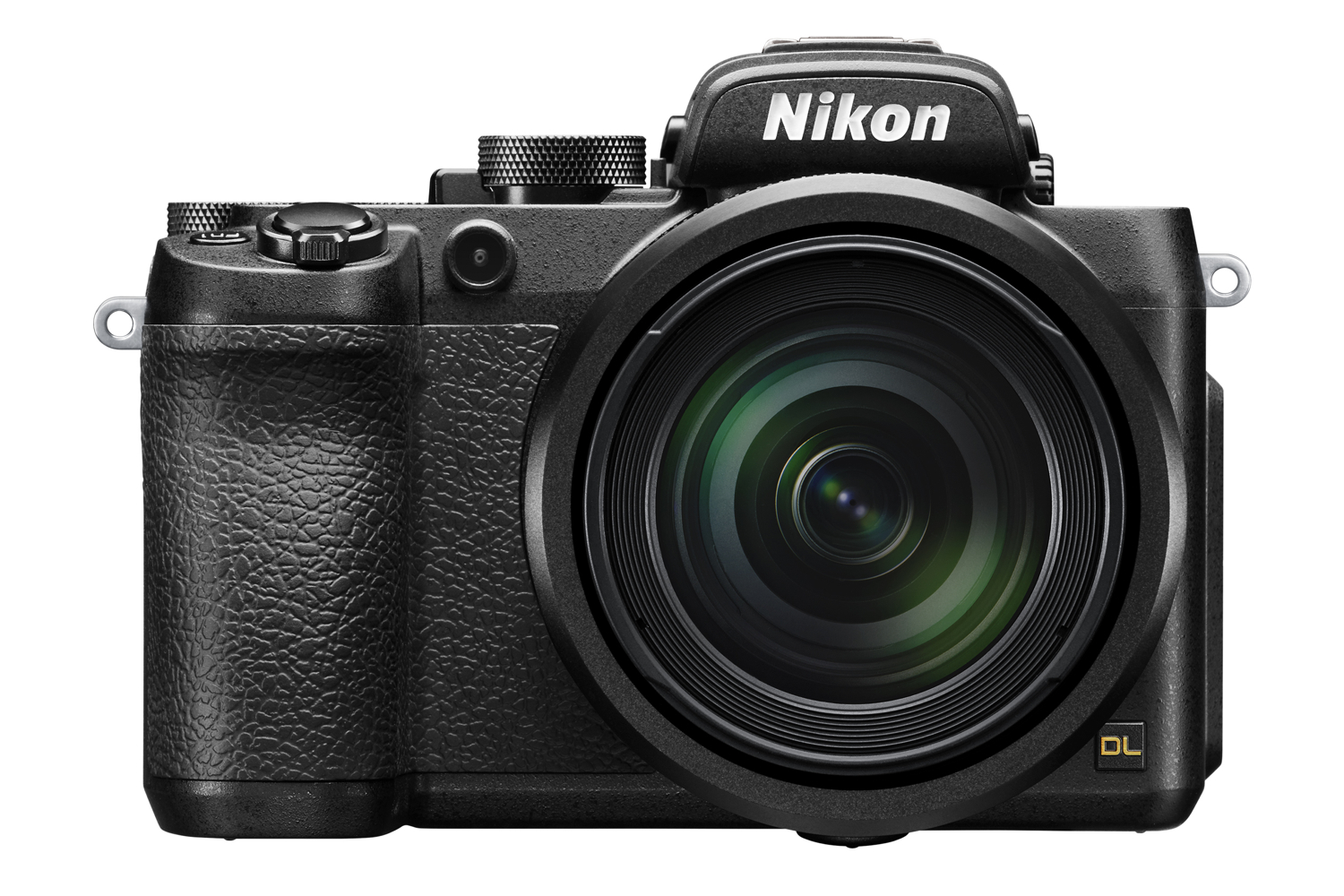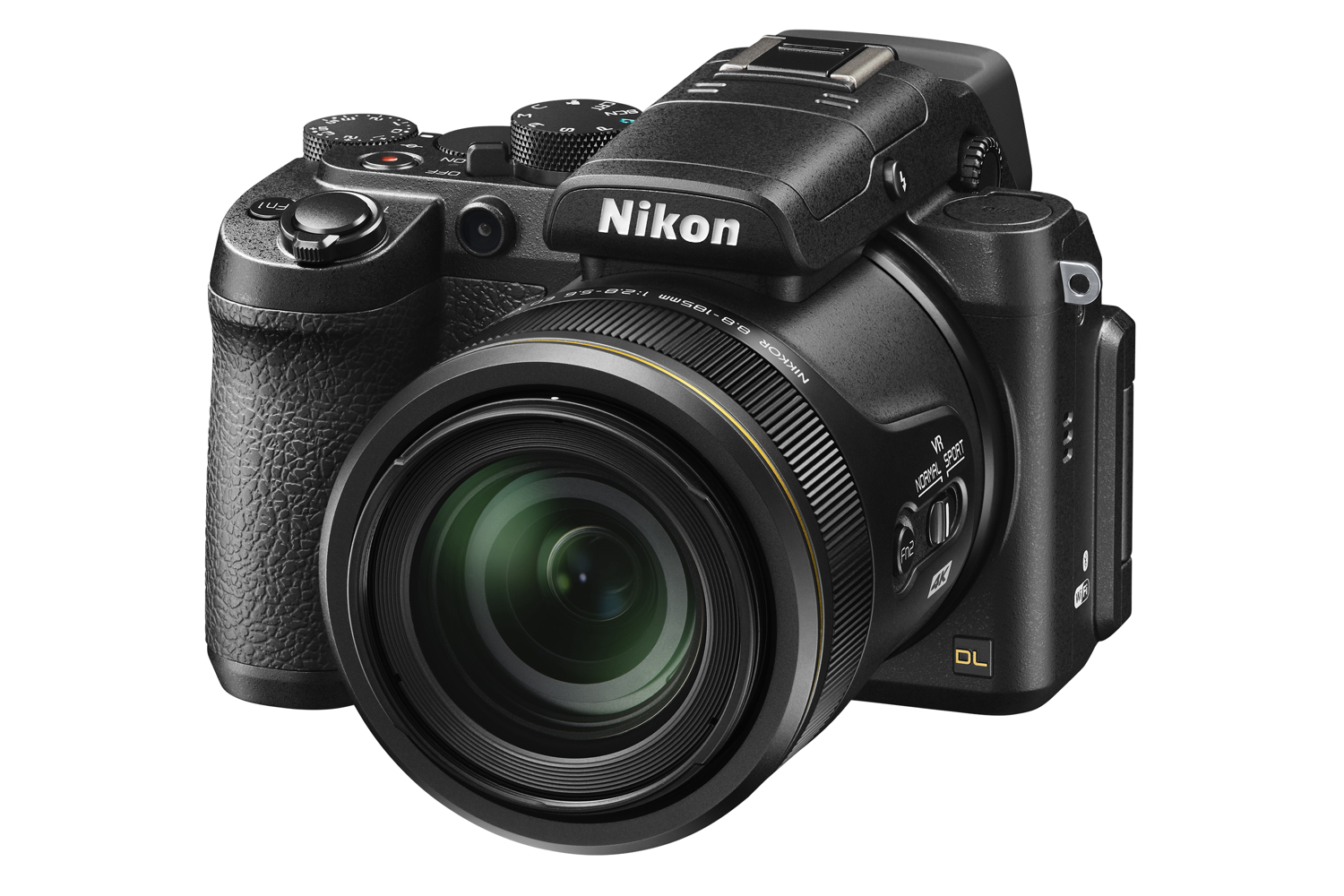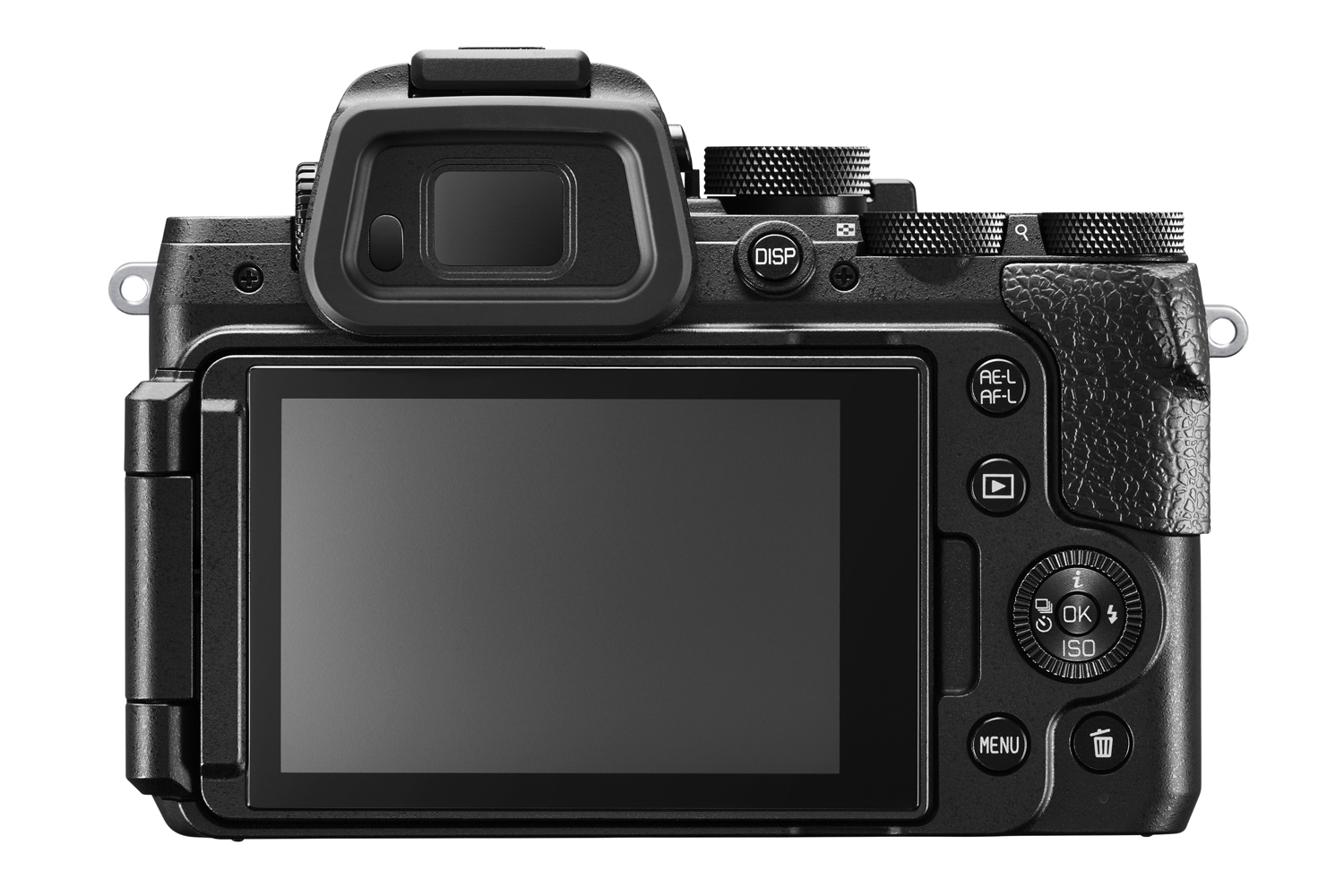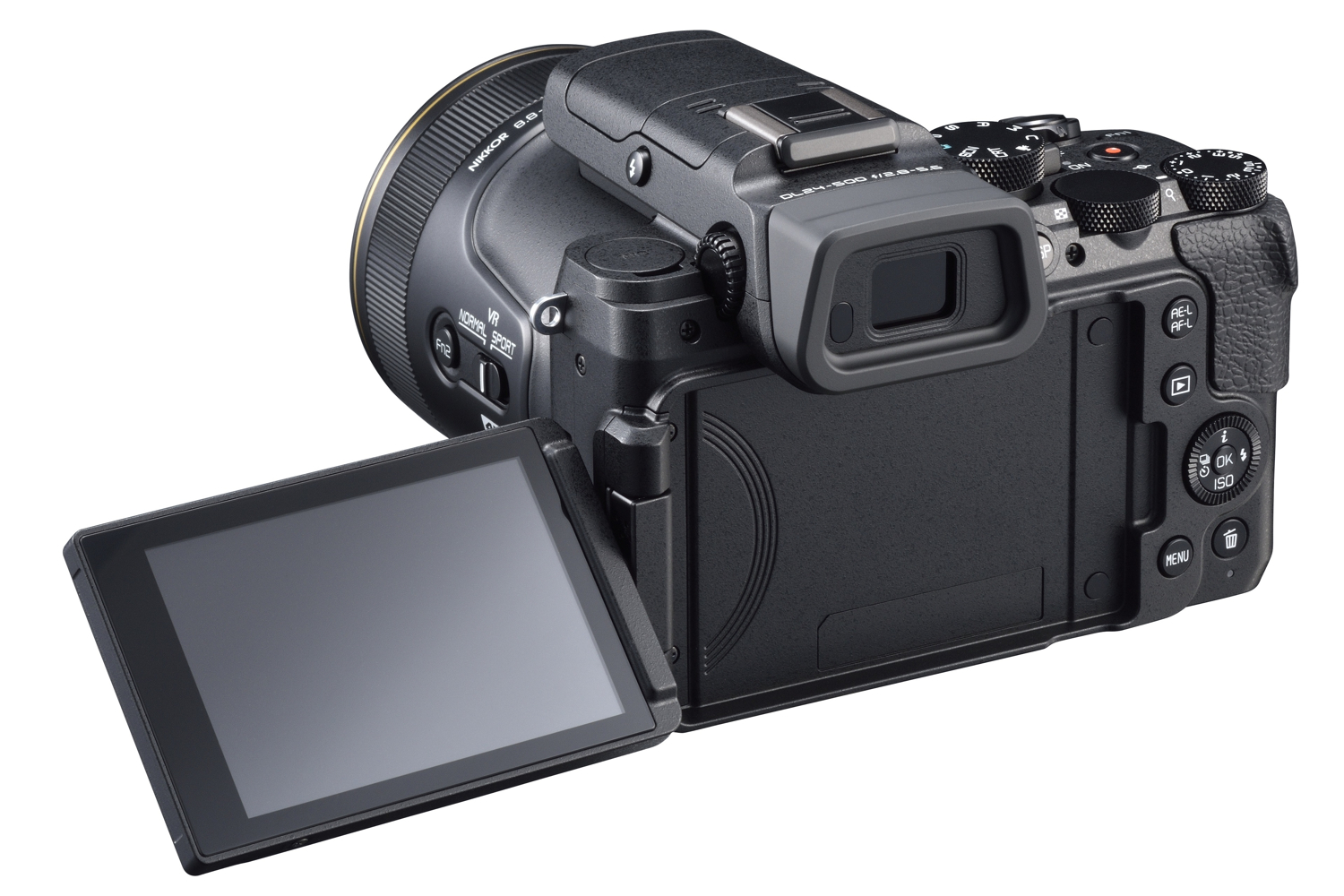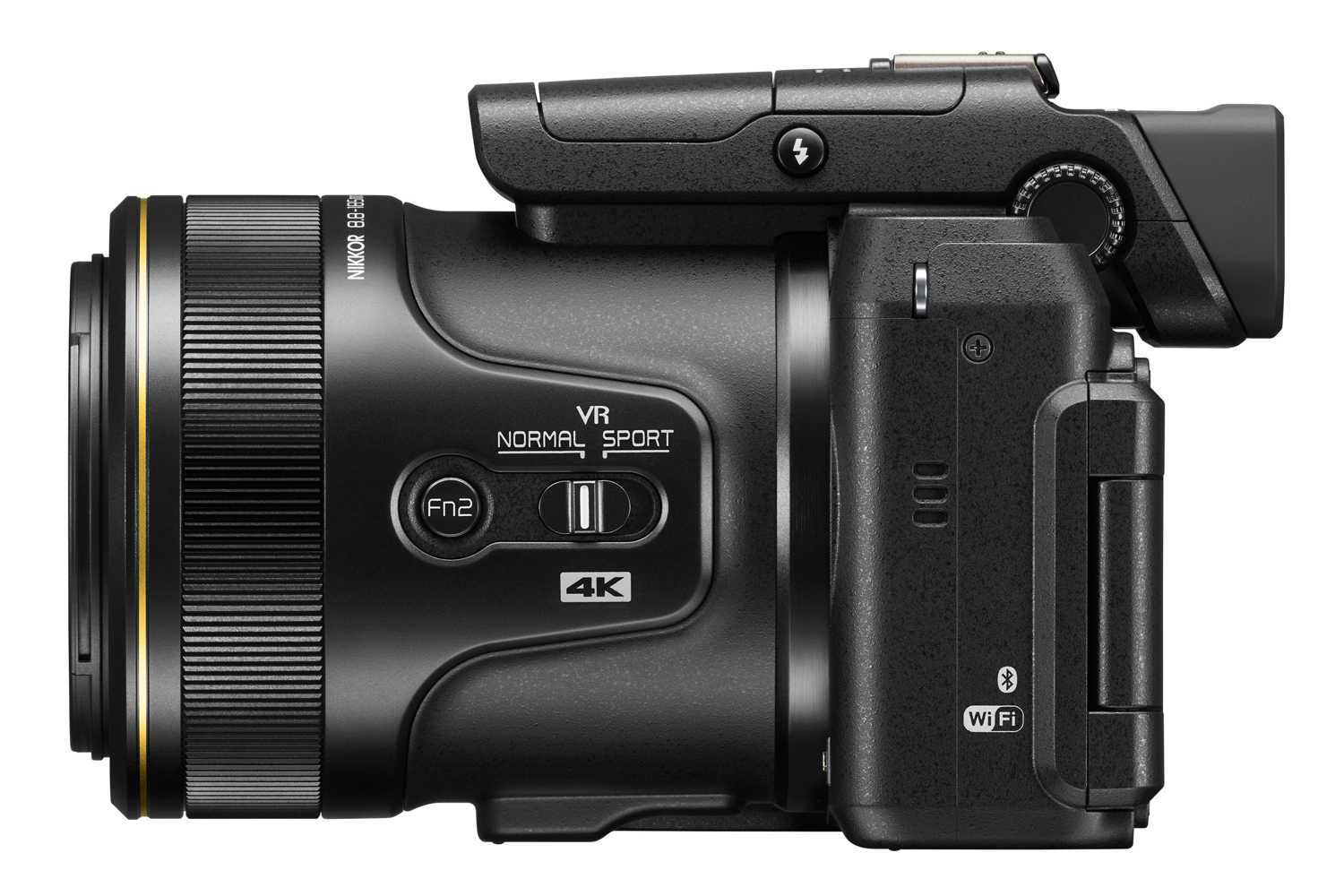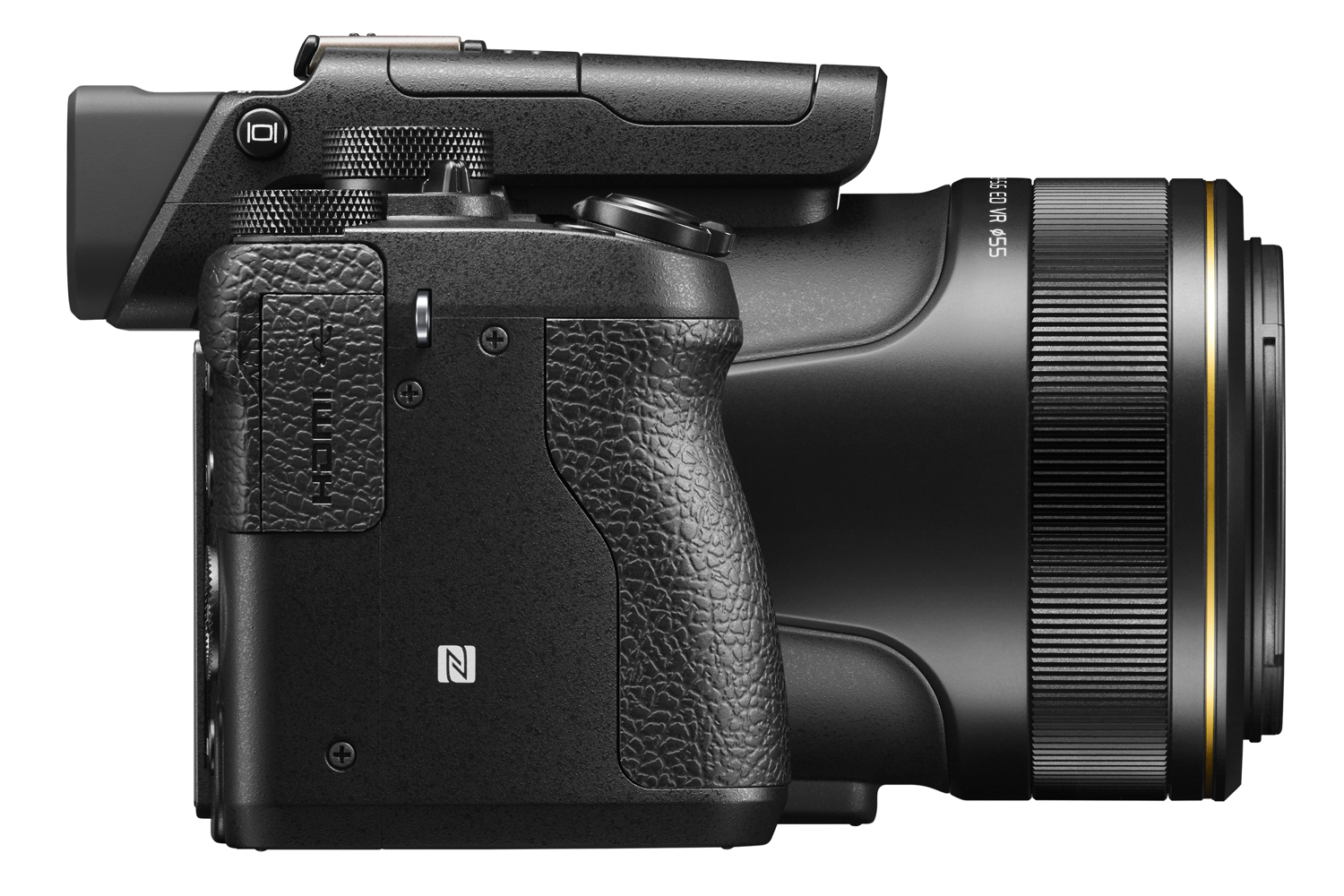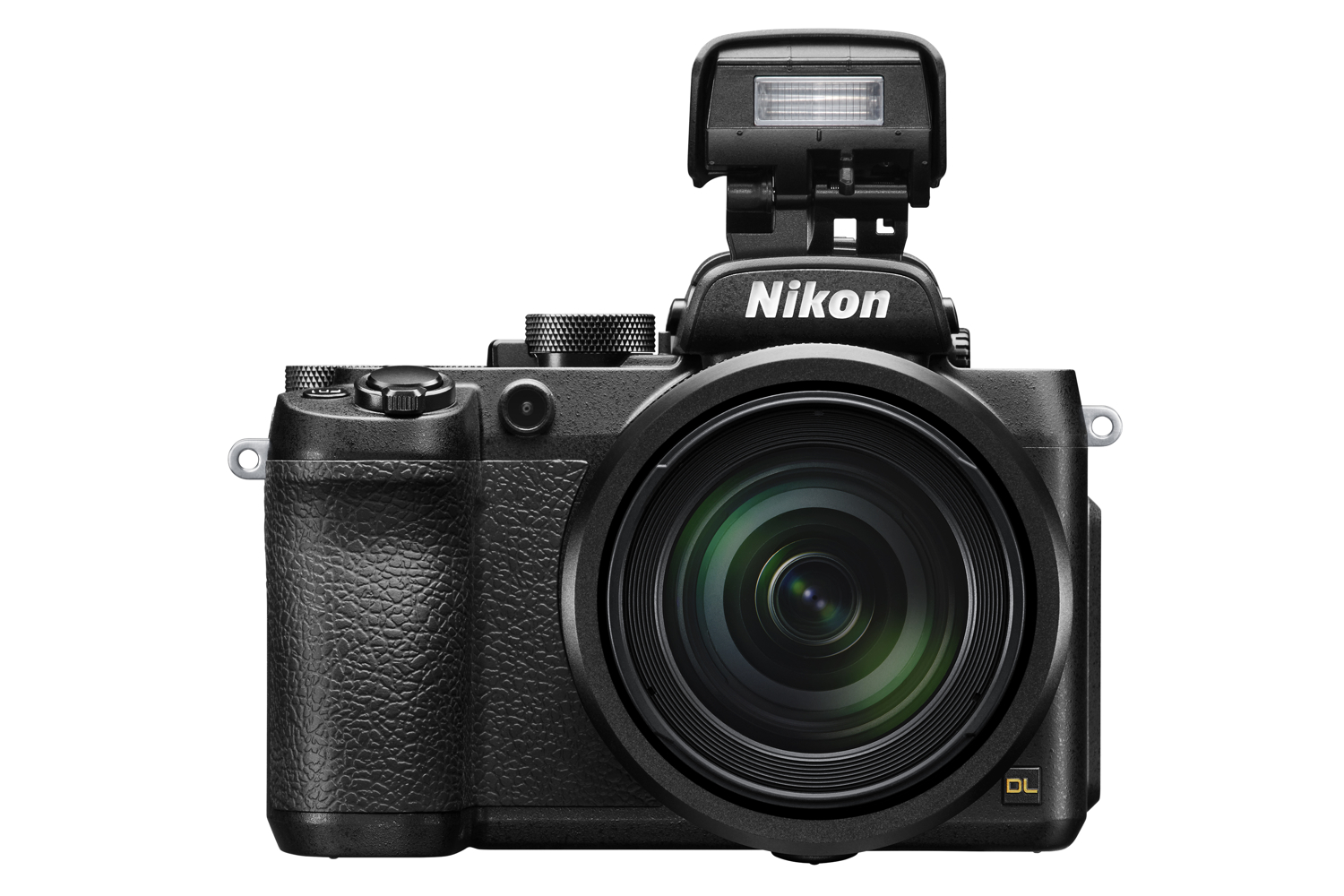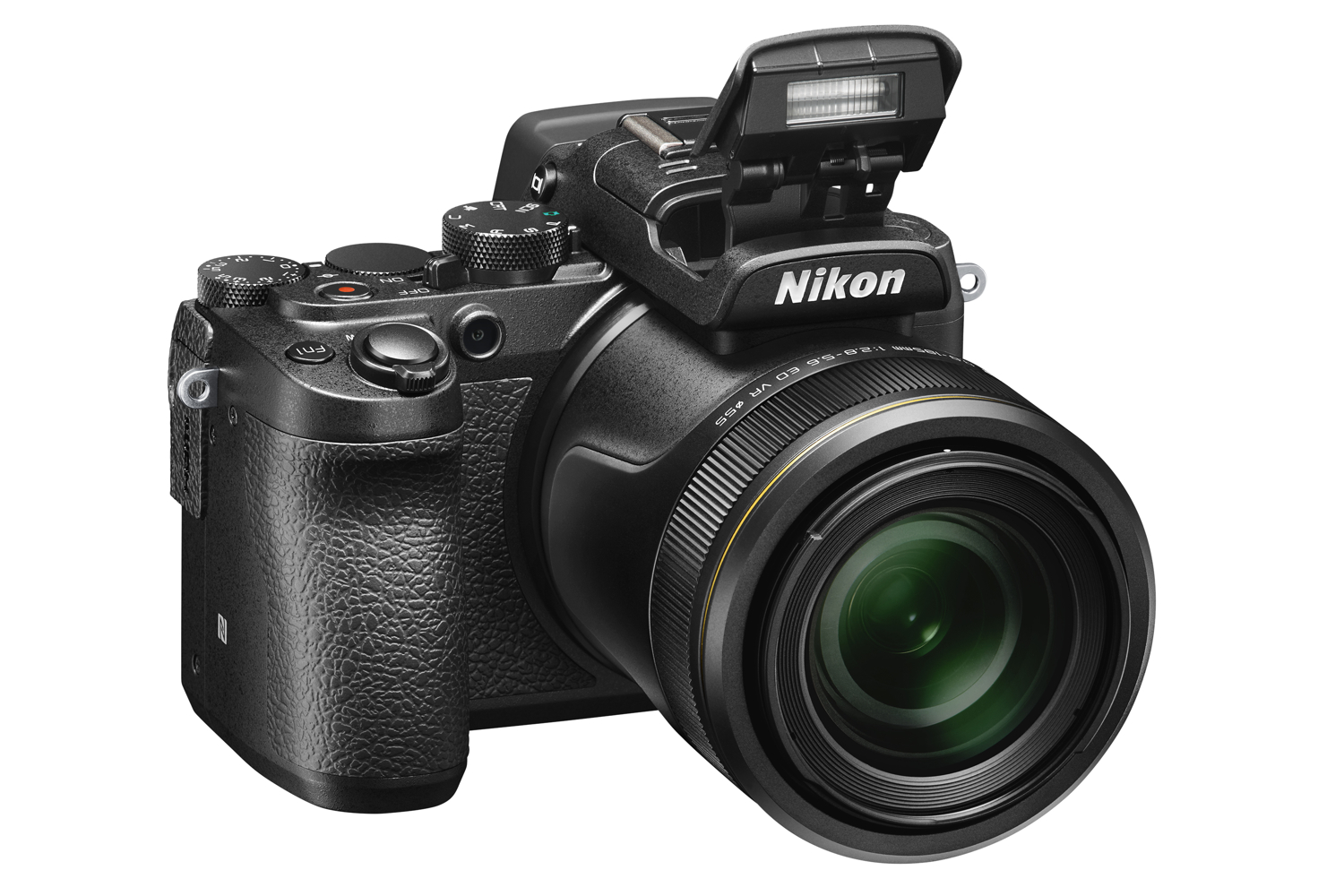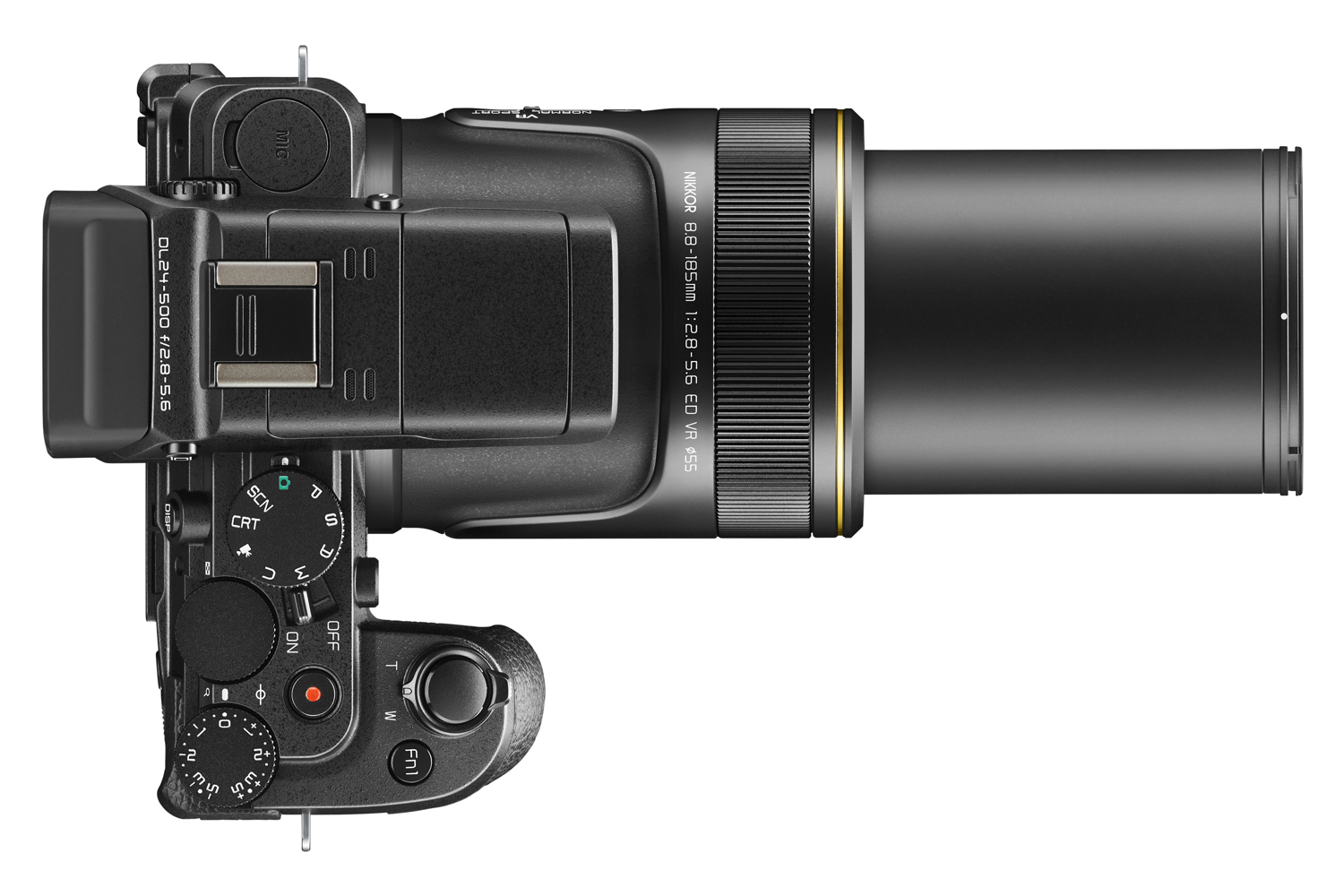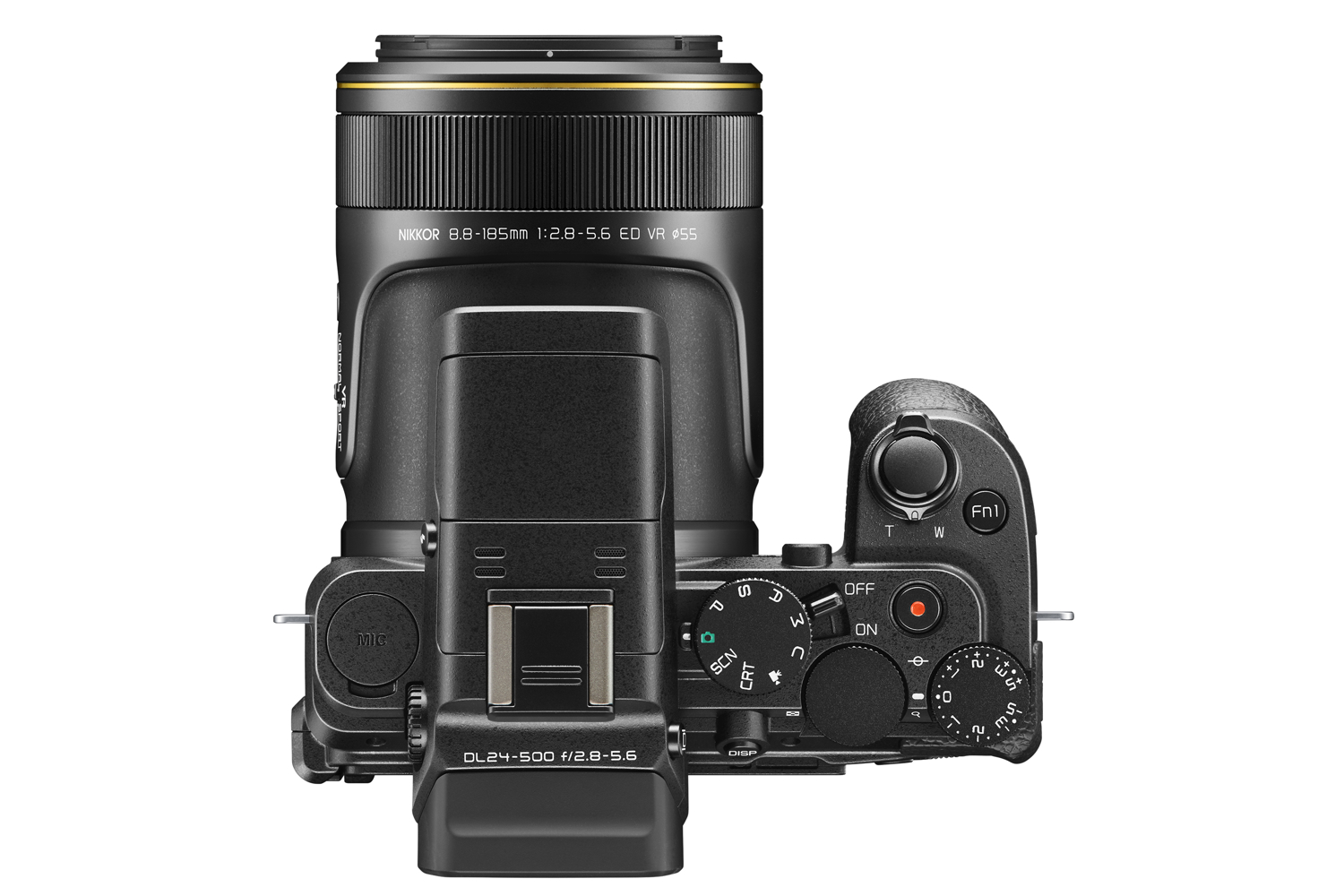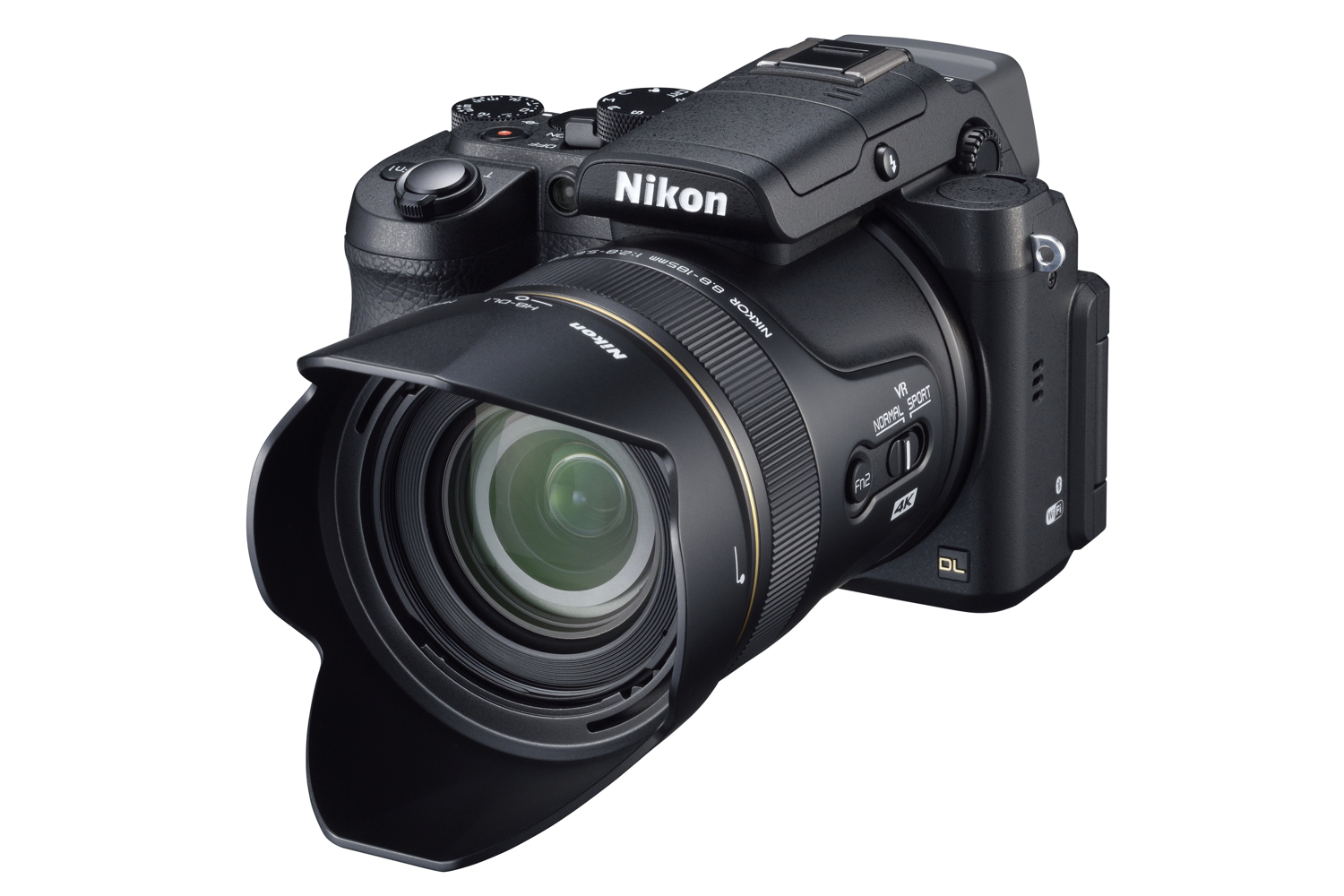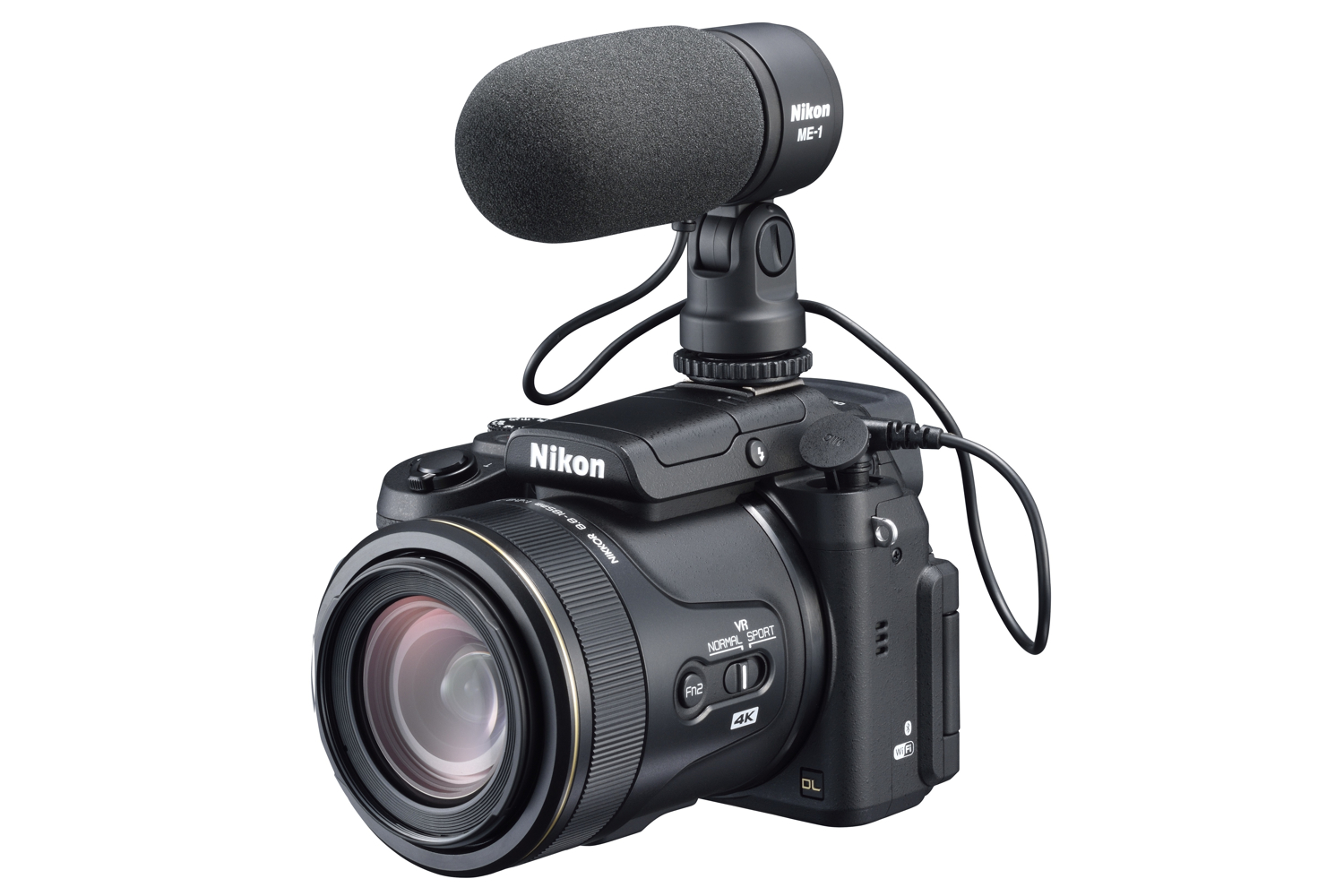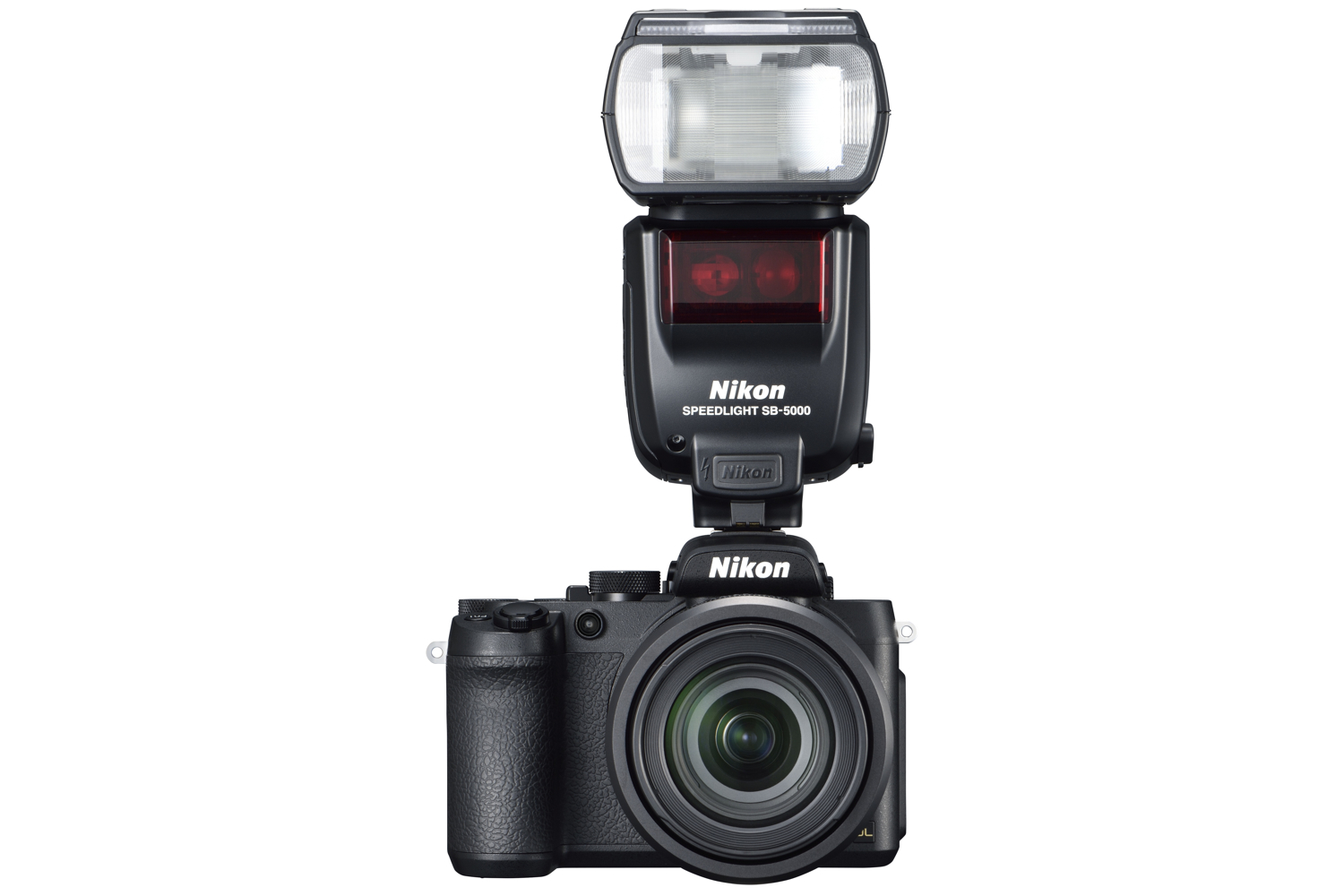Nikon is introducing a new series of premium compact cameras with advanced specs, designed to be secondary cameras for DSLR users or those who don’t want an interchangeable lens model. The DL-series cameras are in-line with offerings like the PowerShot G-series from Canon and RX-series from Sony, and come with fixed Nikkor lenses and 1-inch (CX-format, similar to those used in the Nikon 1-series), 20.8-megapixel back-illuminated CMOS sensors for improved image quality and low-light performance. The DL-series cameras feature fast autofocusing (105 phase detect focus areas, with 171 focus points in contrast detect mode) and continuous shooting (20 frames per second, 60 fps with locked focus), thanks in part to the new Expeed 6A image processor. They can also shoot 4K UHD video (at 30p) and photos in RAW.
At launch, the DL-series will consist of three models, available in early summer: the DL18-50, DL24-85, and DL-24-500. The model names correspond to the focal length of the lenses, and share the aforementioned core components and capabilities. The lenses are coated to protect against dirt, water, and oil, and to reduce ghosting and flare, and are optically stabilized (Dual Detect Optical VR) in the 24-85mm and 24-500mm models. For advanced users, the DL-series cameras have various dials and controls for manual operation, like Nikon’s DSLRs. The cameras also have a focus ring on the lens barrel, high-resolution OLED touch LCDs, and include Wi-Fi and Nikon’s new SnapBridge that uses Bluetooth low energy (BLE) for quick, “always on” pairing with phones or tablets.
With video, besides 4K, the cameras support HDMI-out to external recorder, slow-motion at 1,200 fps, selectable exposure modes while recording, image grab from video, time-lapse, and standard Full HD.
The DL18-50 ($850) is a pocket model with an 18-50mm (2.8x), f/1.8-2.8 lens, compatible with 46mm filters. At its widest angle, the aperture allows for natural bokeh (soft defocus). Nikon says this camera is ideal for architecture shooters. It has a 1,037k-dot OLED display that tilts, while the hot-shoe is compatible with Nikon’s optional DF-E1 electronic viewfinder (EVR); the hot-shoe is also compatible with Nikon i-TTL Speedlights (external flashes).
The DL24-85 ($650) is a compact model similar to the DL18-50, except here is a 24-85mm (3.6x), f/1.8-2.8 lens. The lens (11 elements in 9 groups) supports 40.5mm filters. The DL24-85 has a Super Macro Mode that lets you get close to small objects, like the detail of flower petals or insects.
The DL24-500 ($1,000) is a long-zoom model with a 24-500mm (21x) lens, ideal for wildlife. The lens has a f/2.8-5.6 aperture, and the lens works with 55mm filters. Unlike the compact models, the DL24-500 has a built-in EVR (2,359k-dot OLED) in addition to the LCD. Geared toward videographers as well, the camera has a mic input.
The DL-series isn’t a DSLR alternative for a variety of reasons, chiefly the smaller sensor. But it is far superior (on paper) to many so-called high-end compacts. During a Nikon briefing, we had an opportunity to try out the cameras: They have a solid build quality, and there are plenty of controls for those who like them. In some ways, they seem more advanced than Nikon’s 1-series compact mirrorless cameras. Performance seems snappy, although we weren’t able to judge image quality, so that will have to wait. Pricing wise, they are competitive to premium models from Canon, Sony, and Panasonic.
Editors' Recommendations
- DJI Air 2S enters pro territory with its one-inch camera sensor and 5.4K video
- Nikon meshes 2,000mm zoom capabilities with 4K video in the superzoom P950
